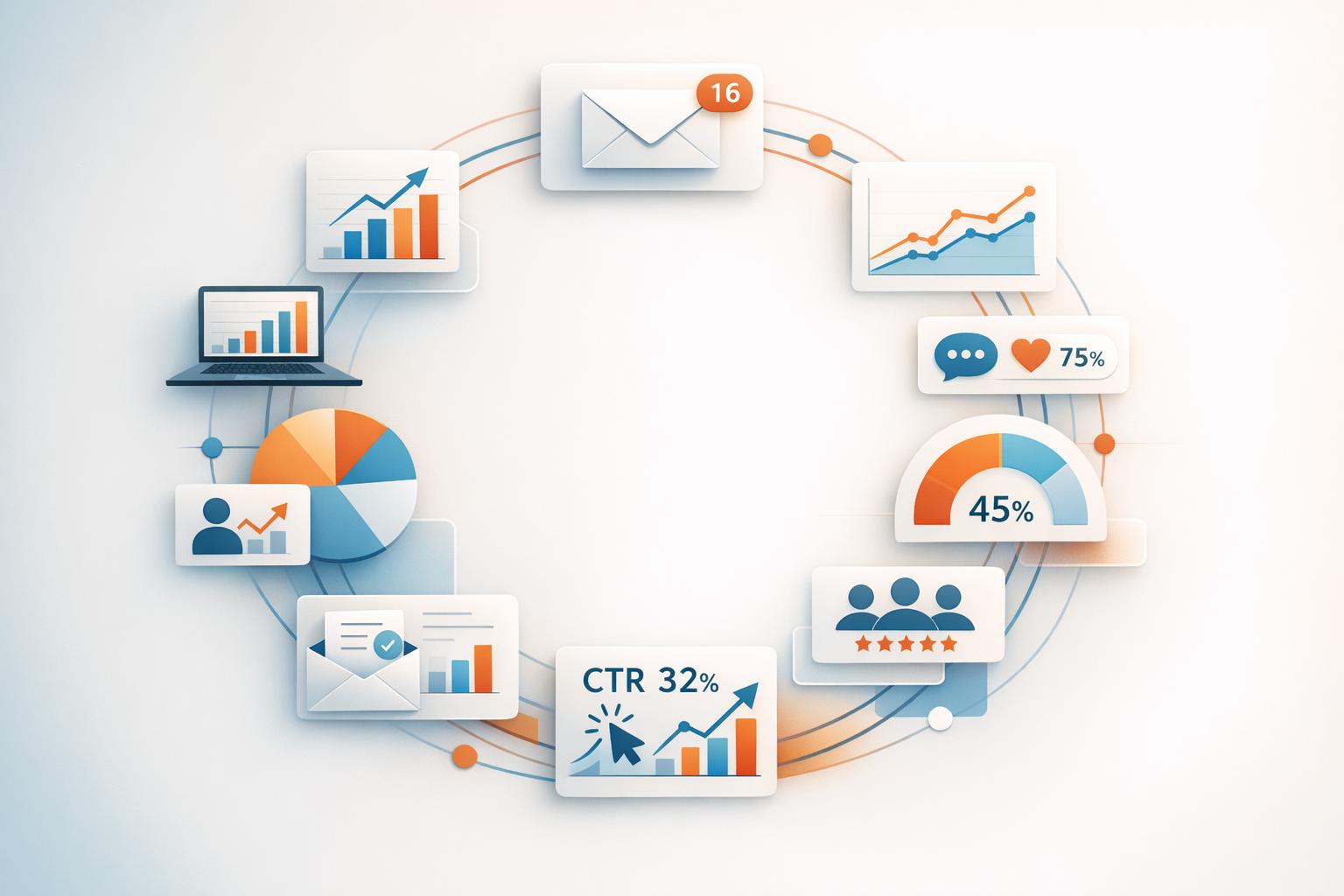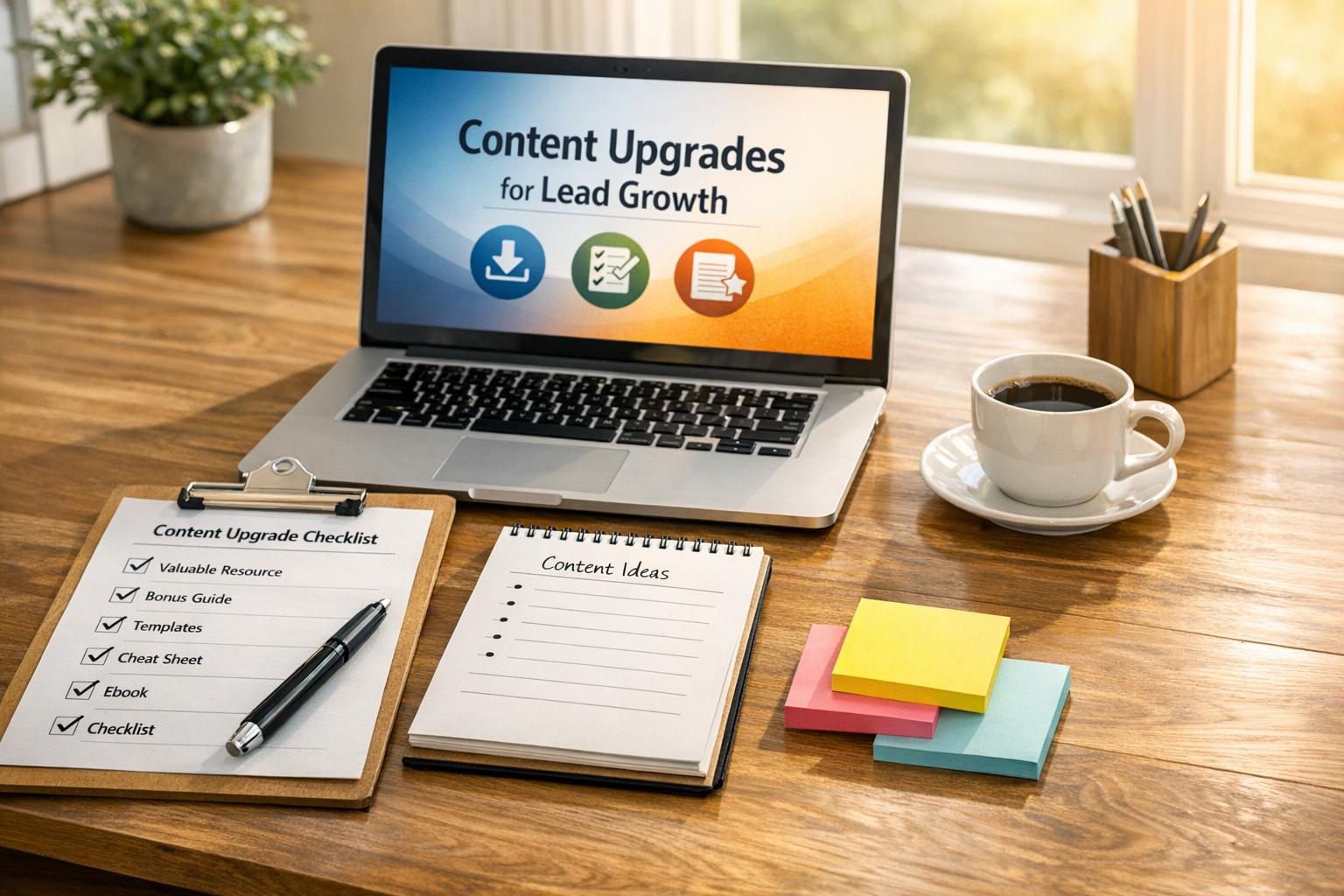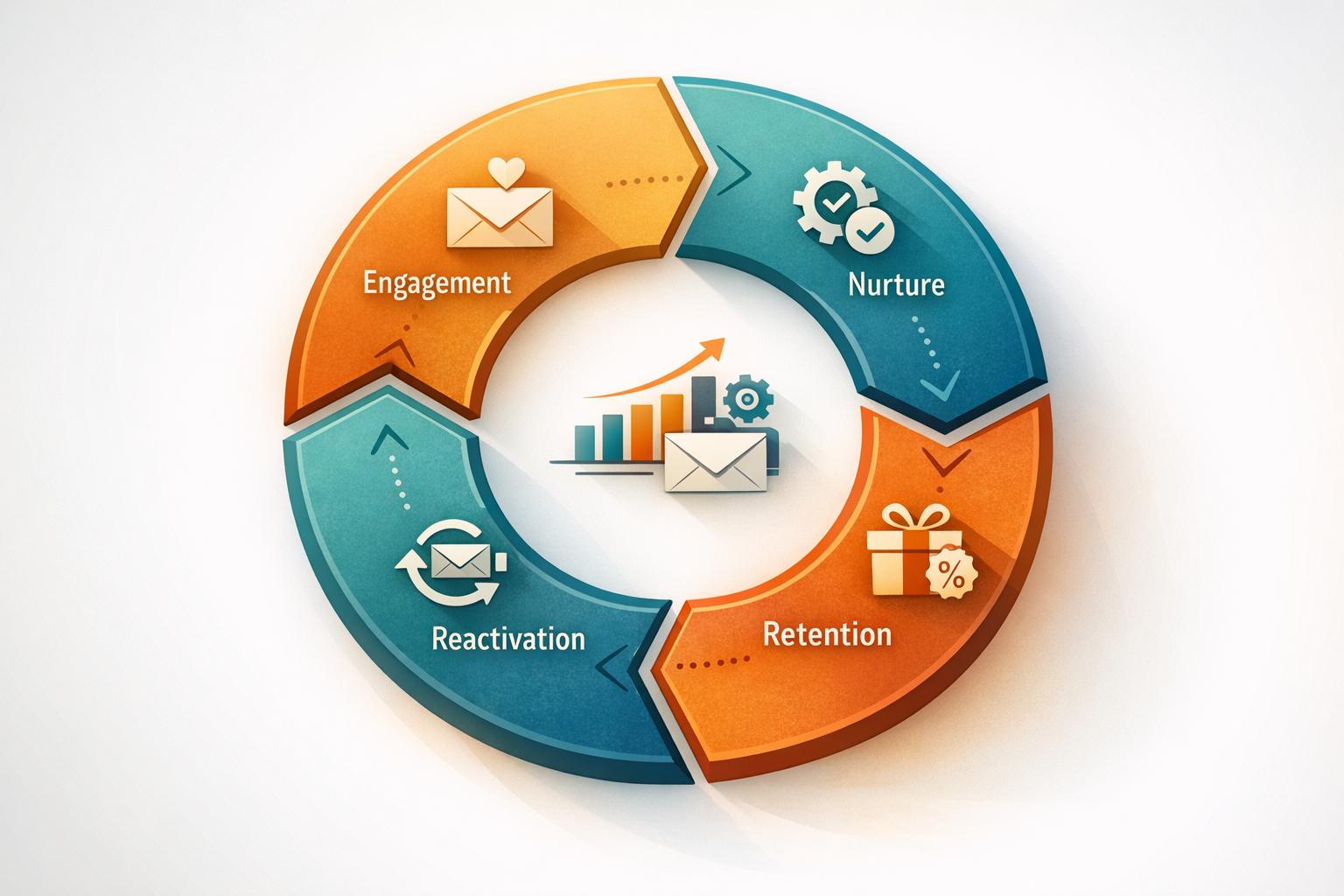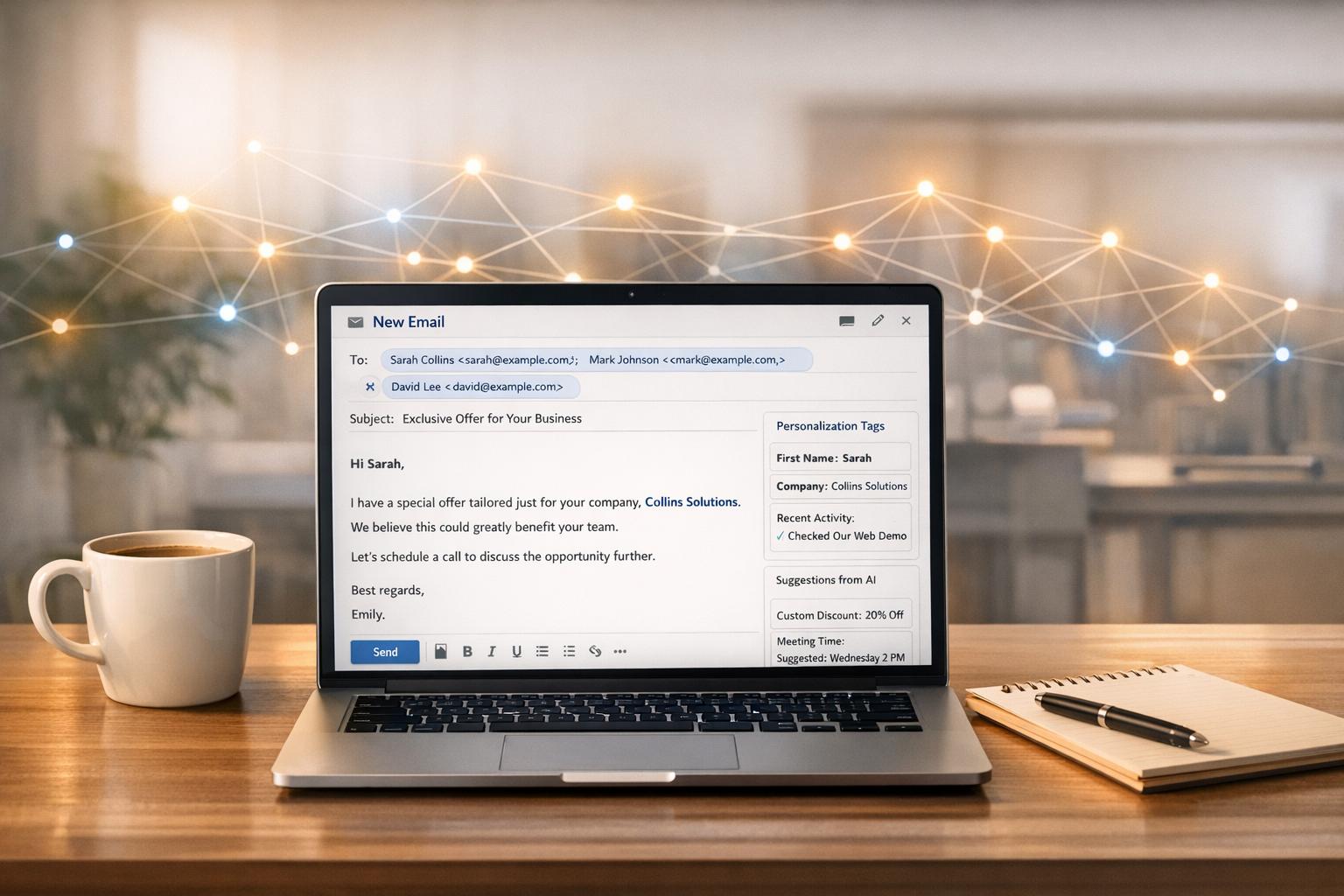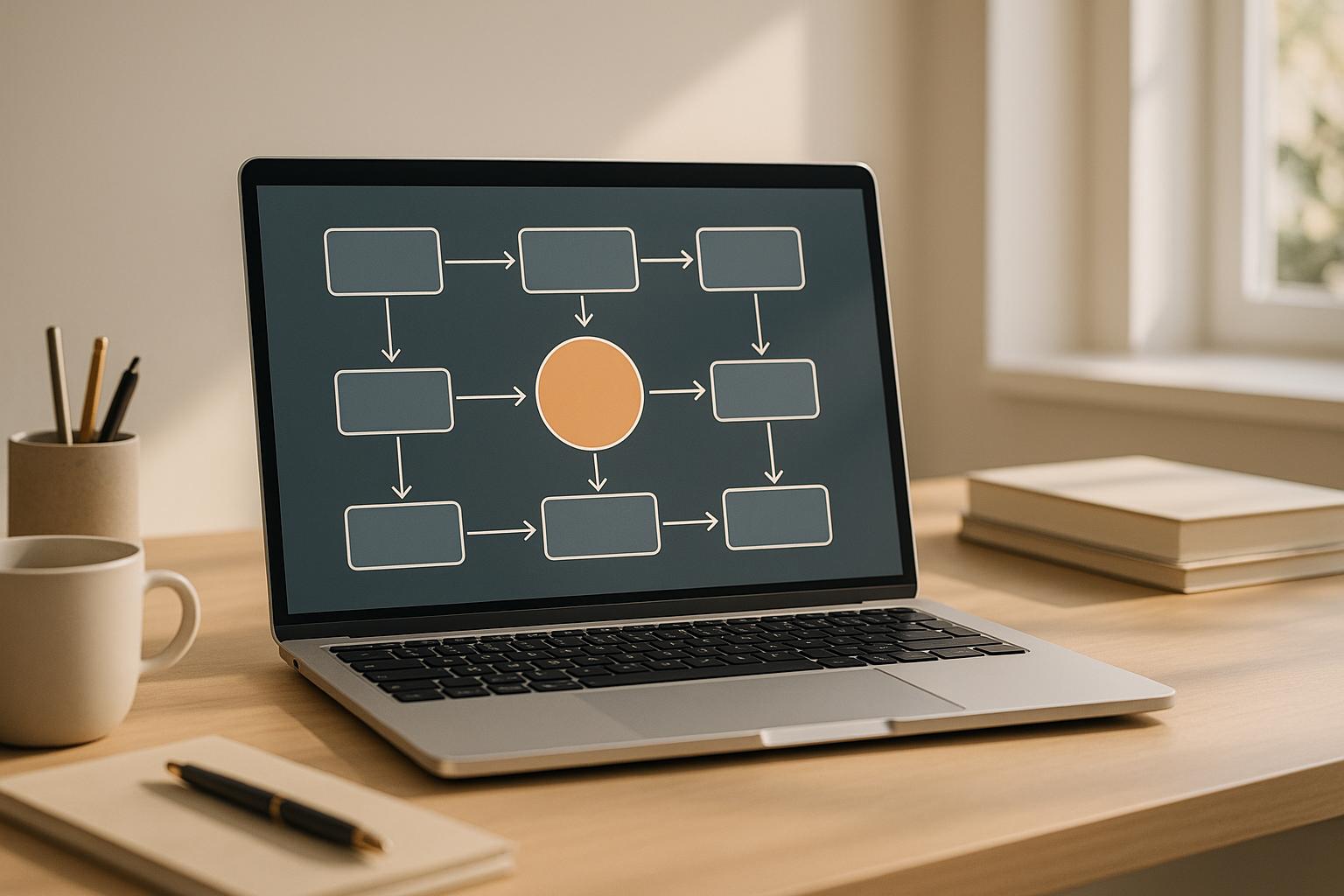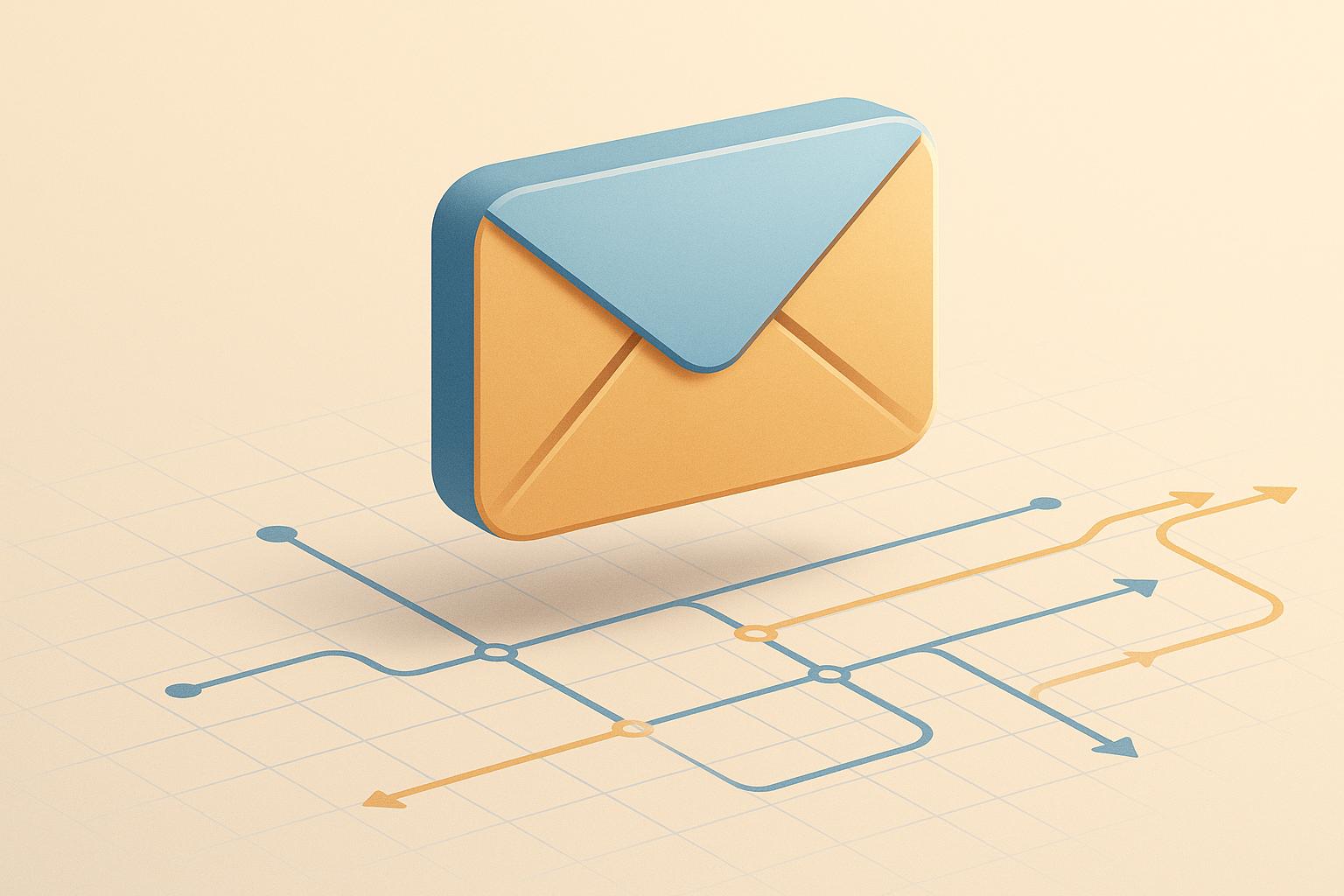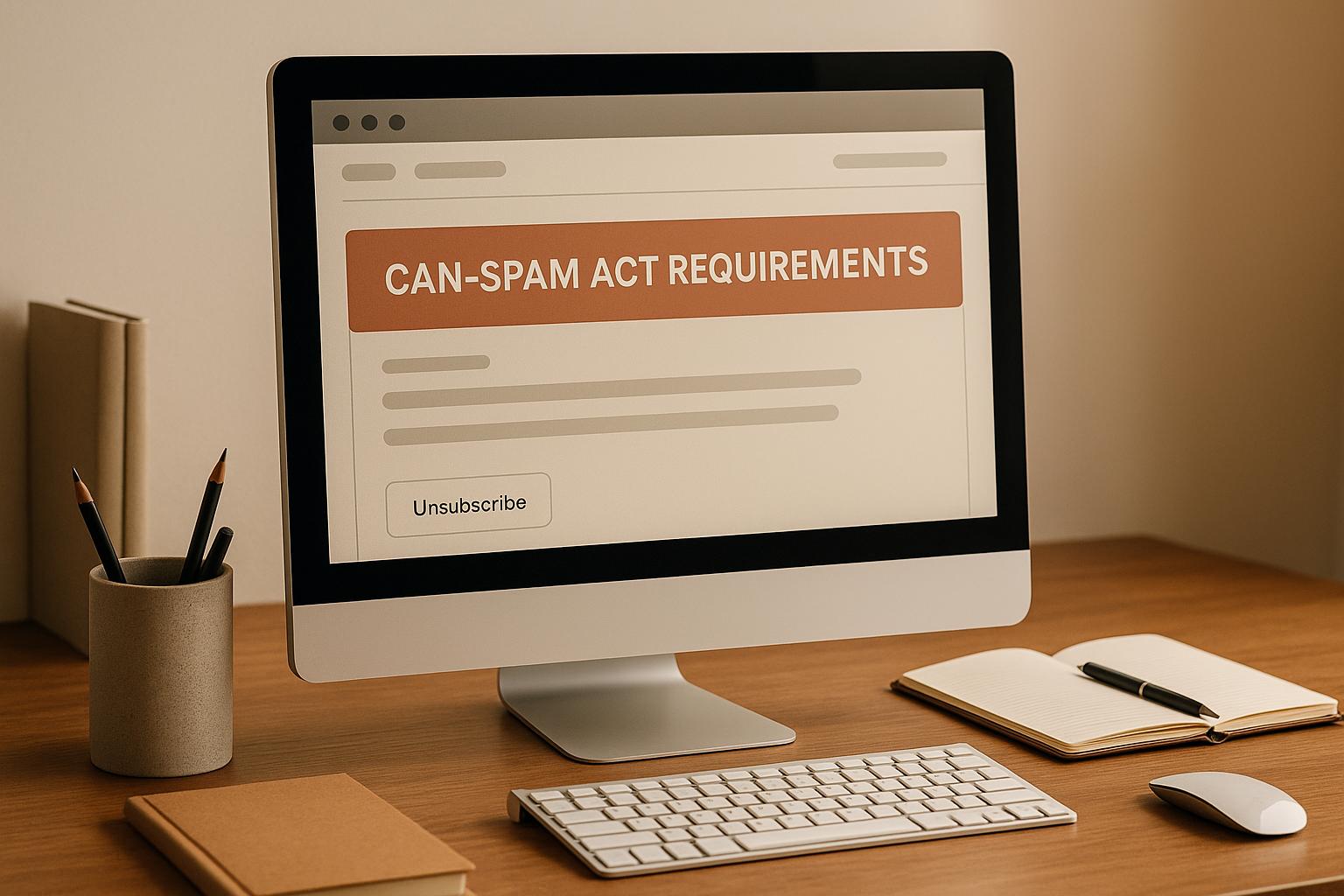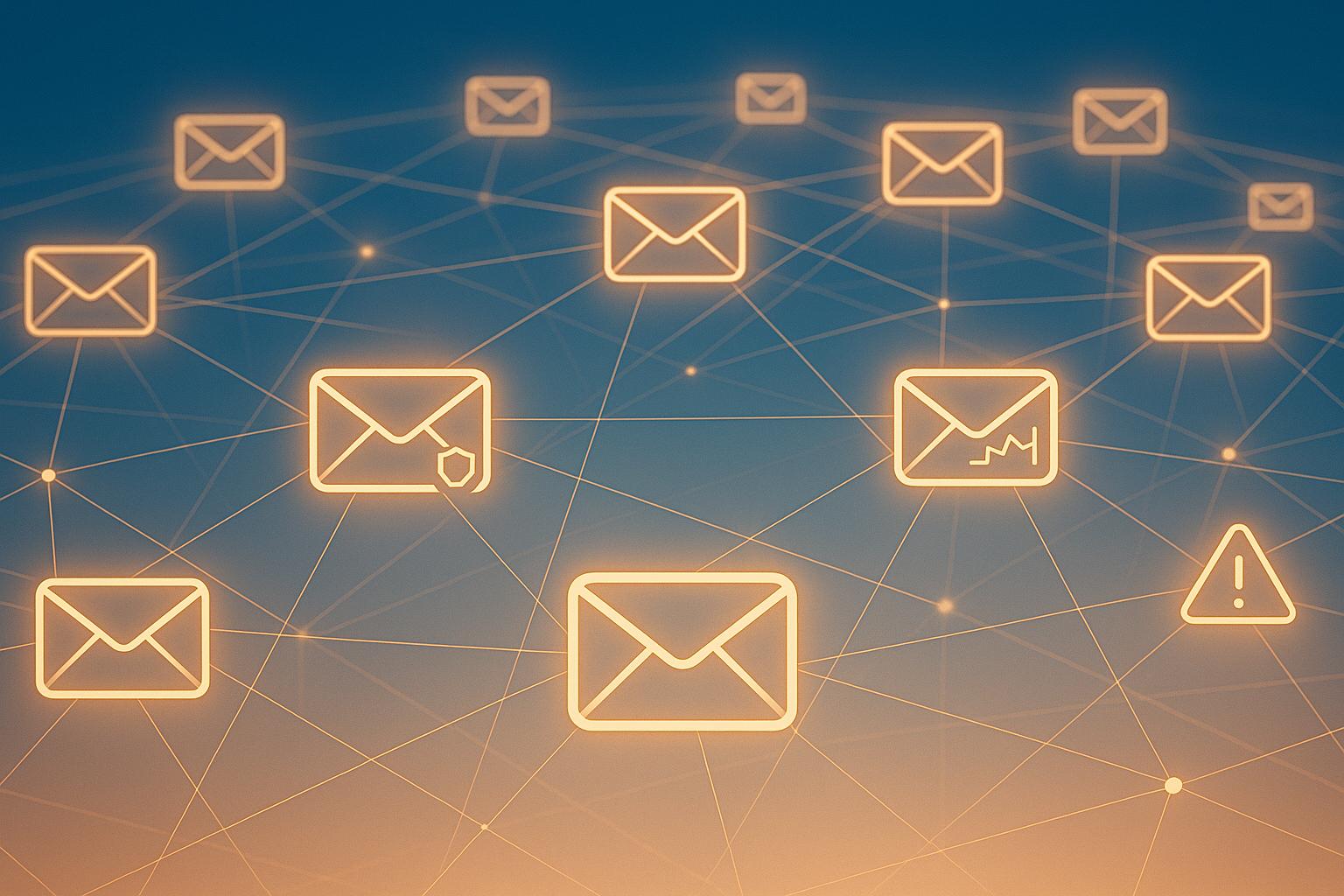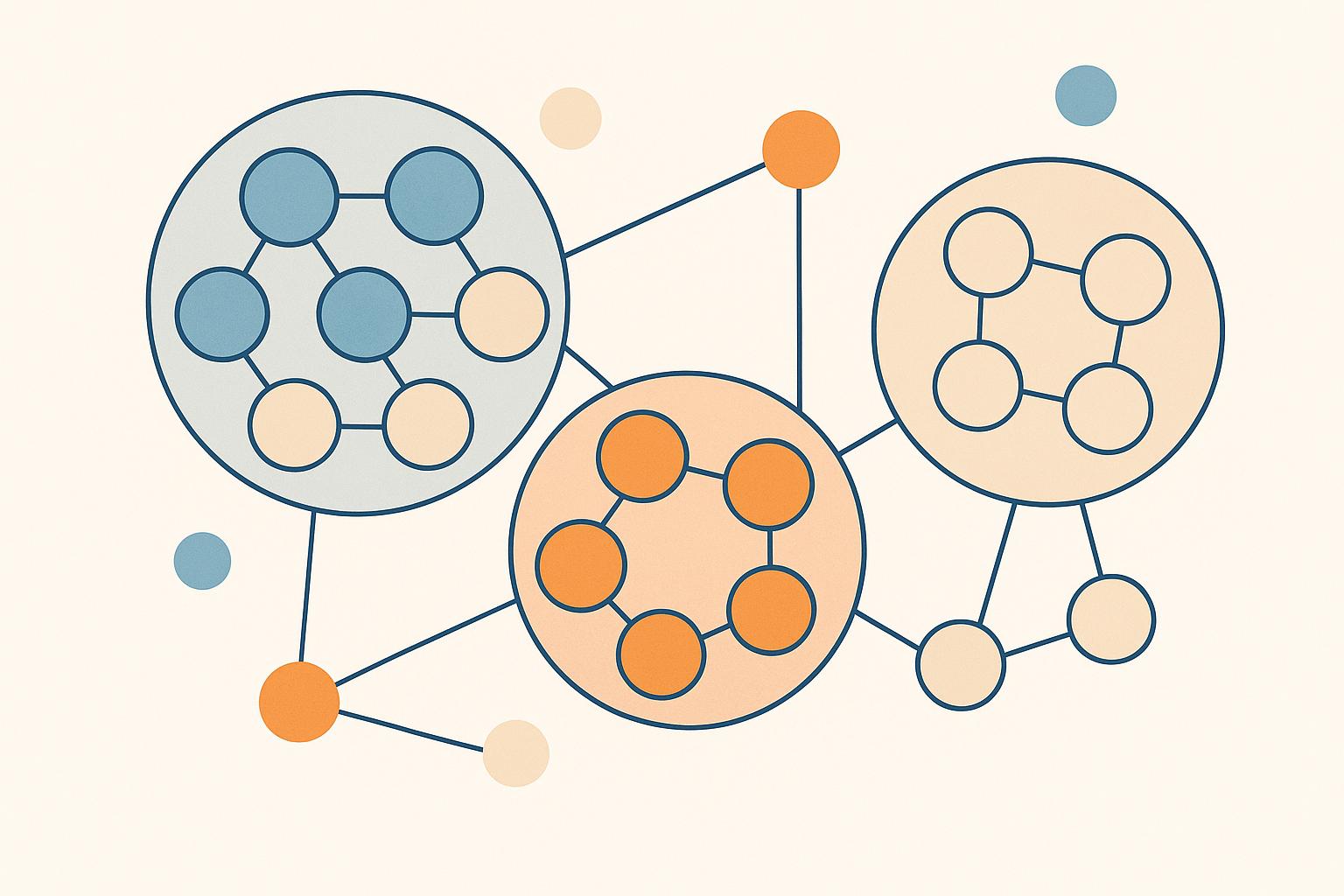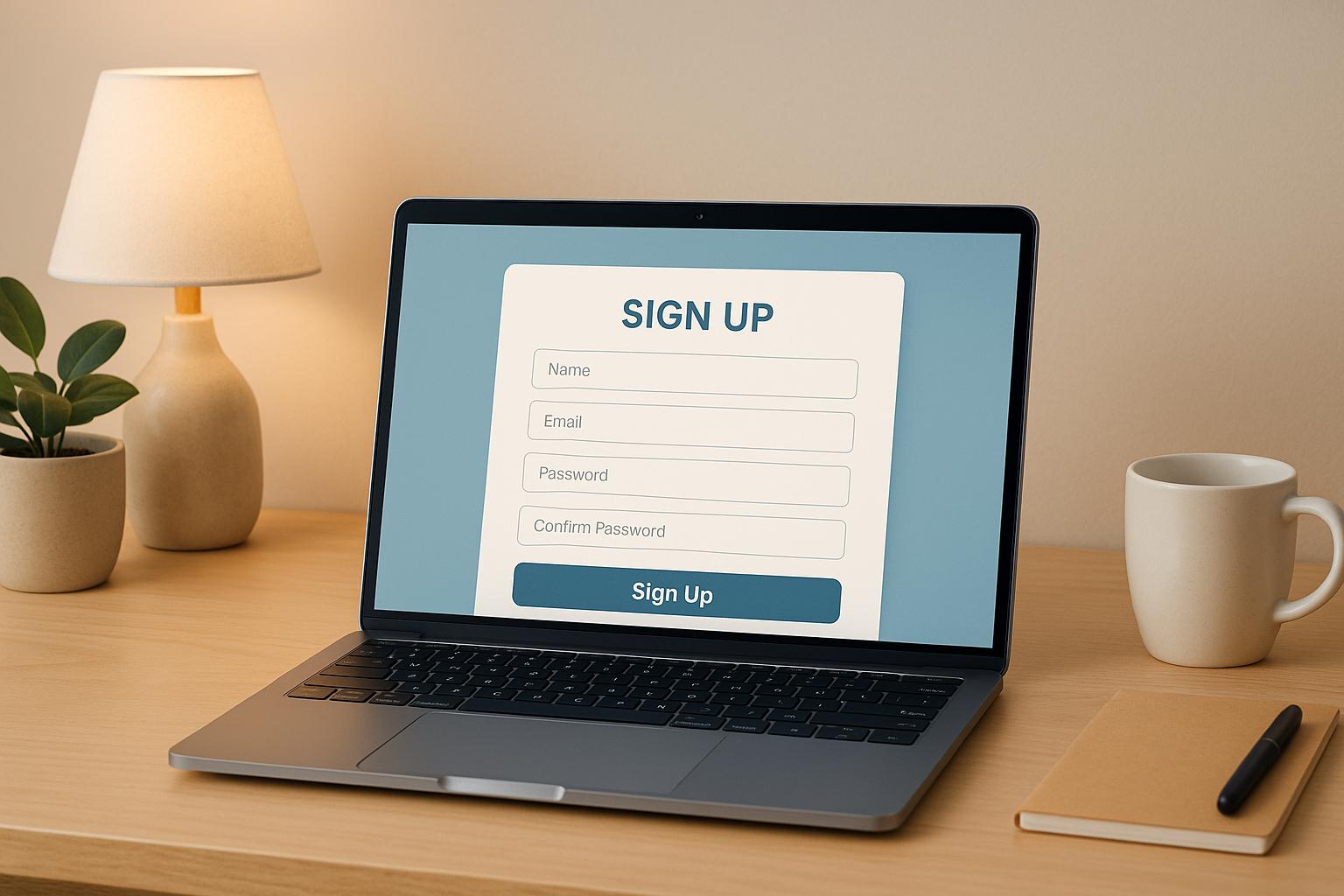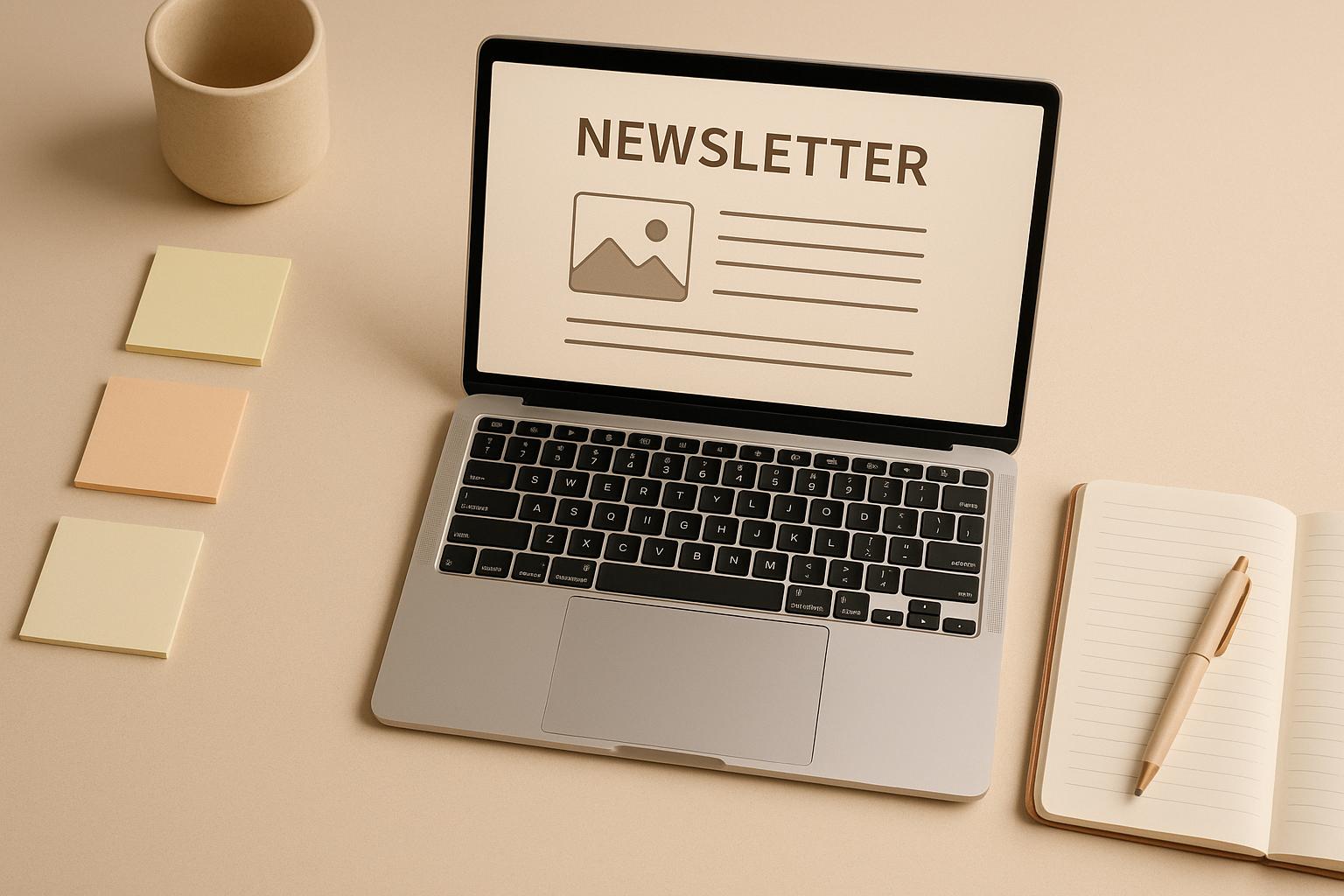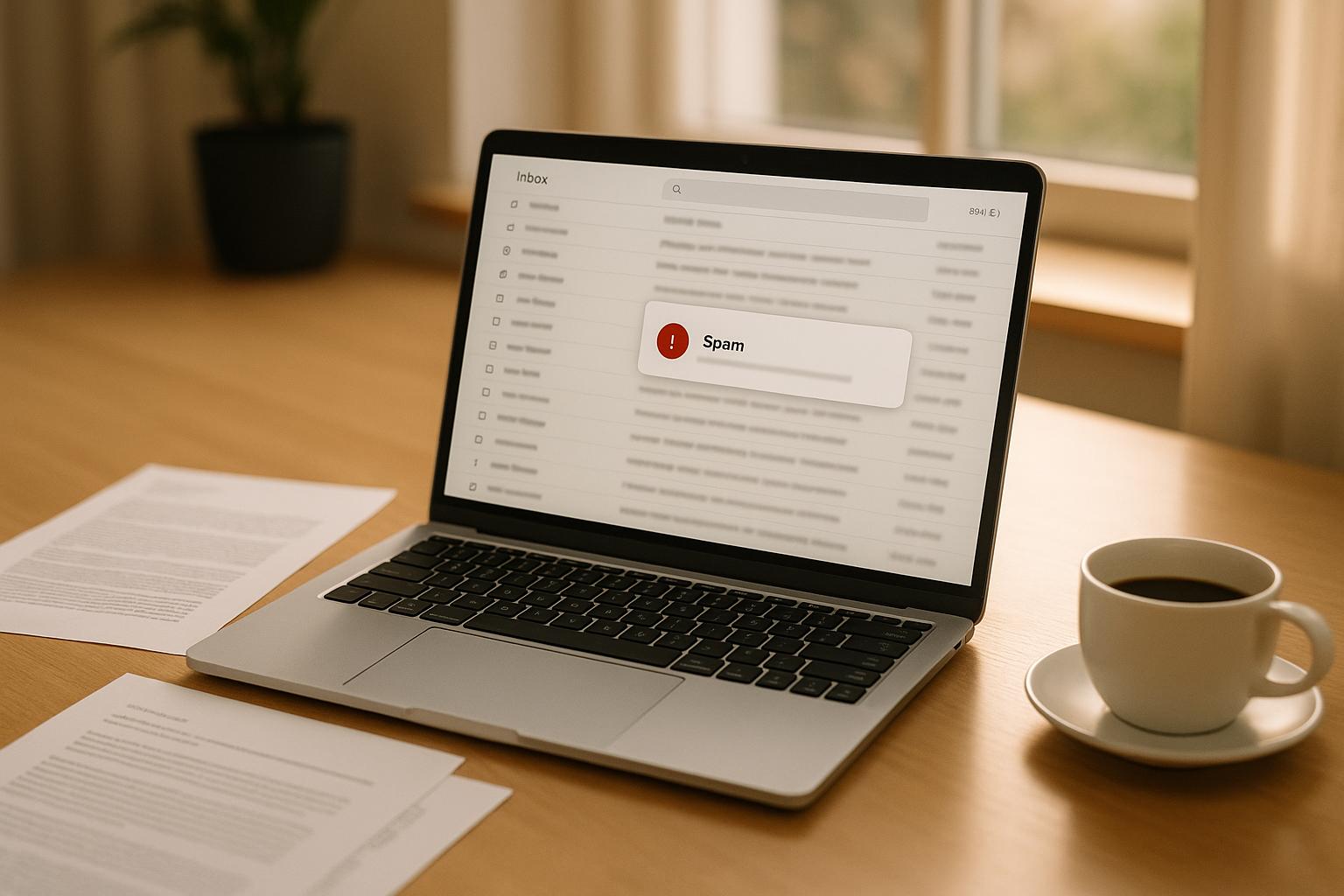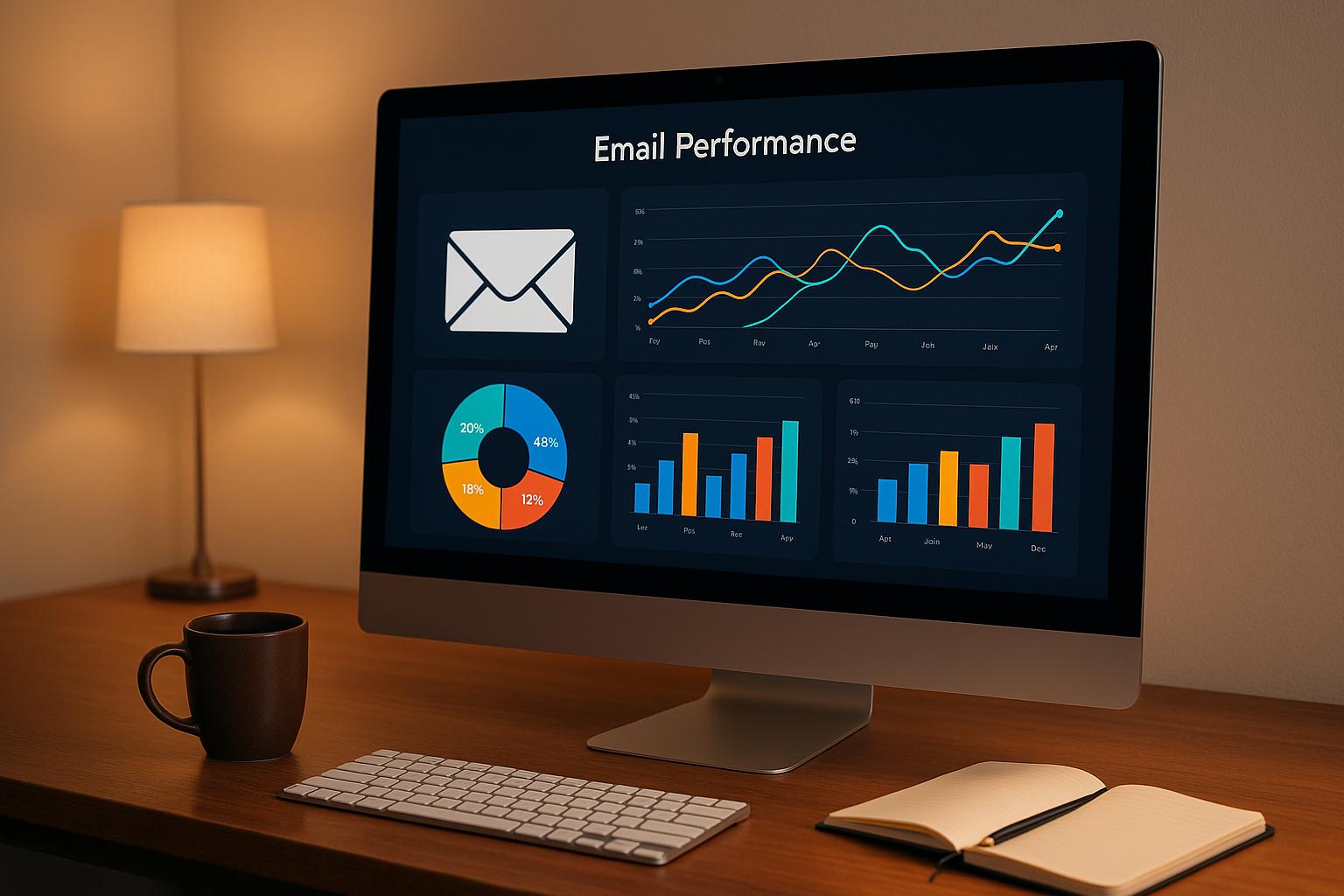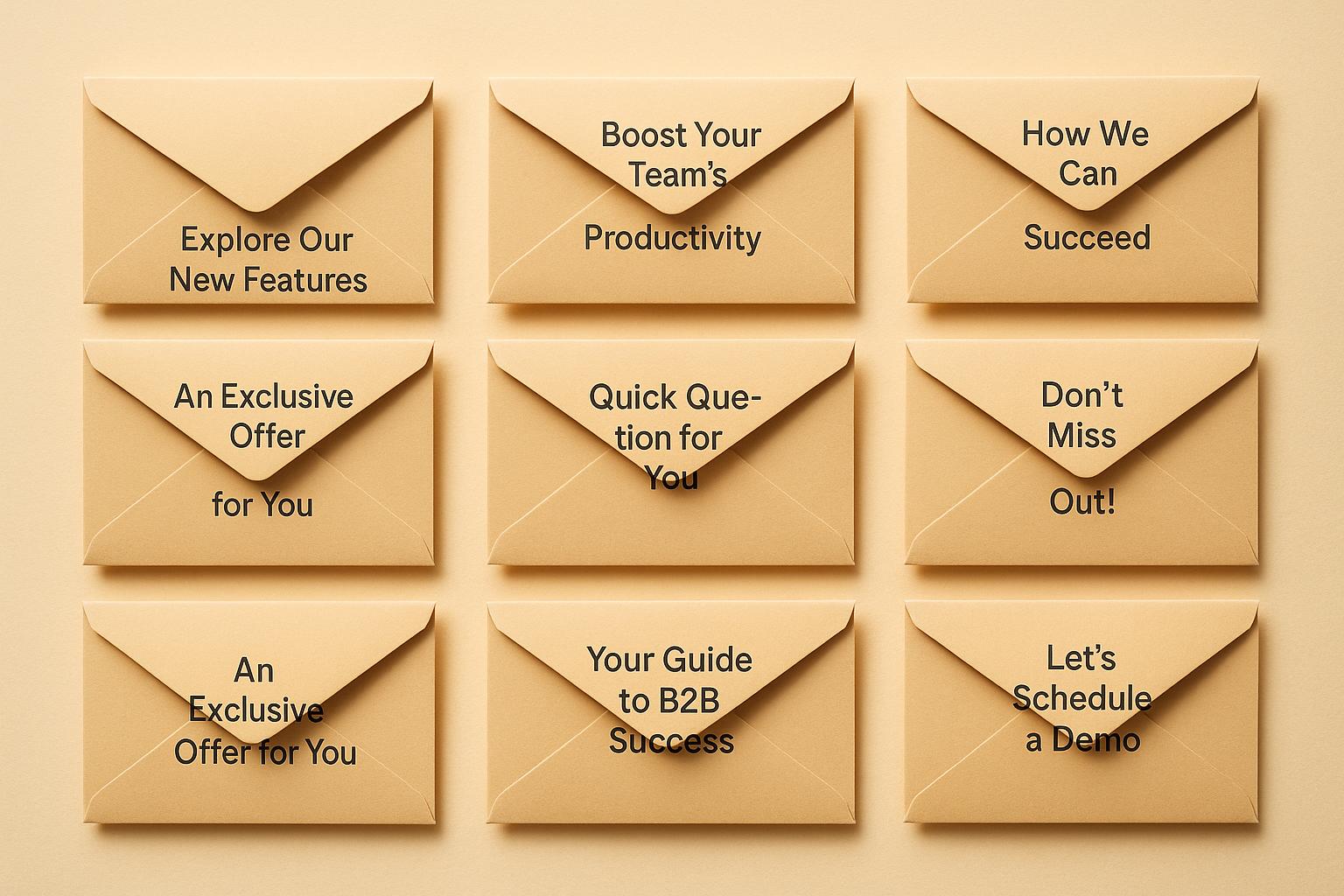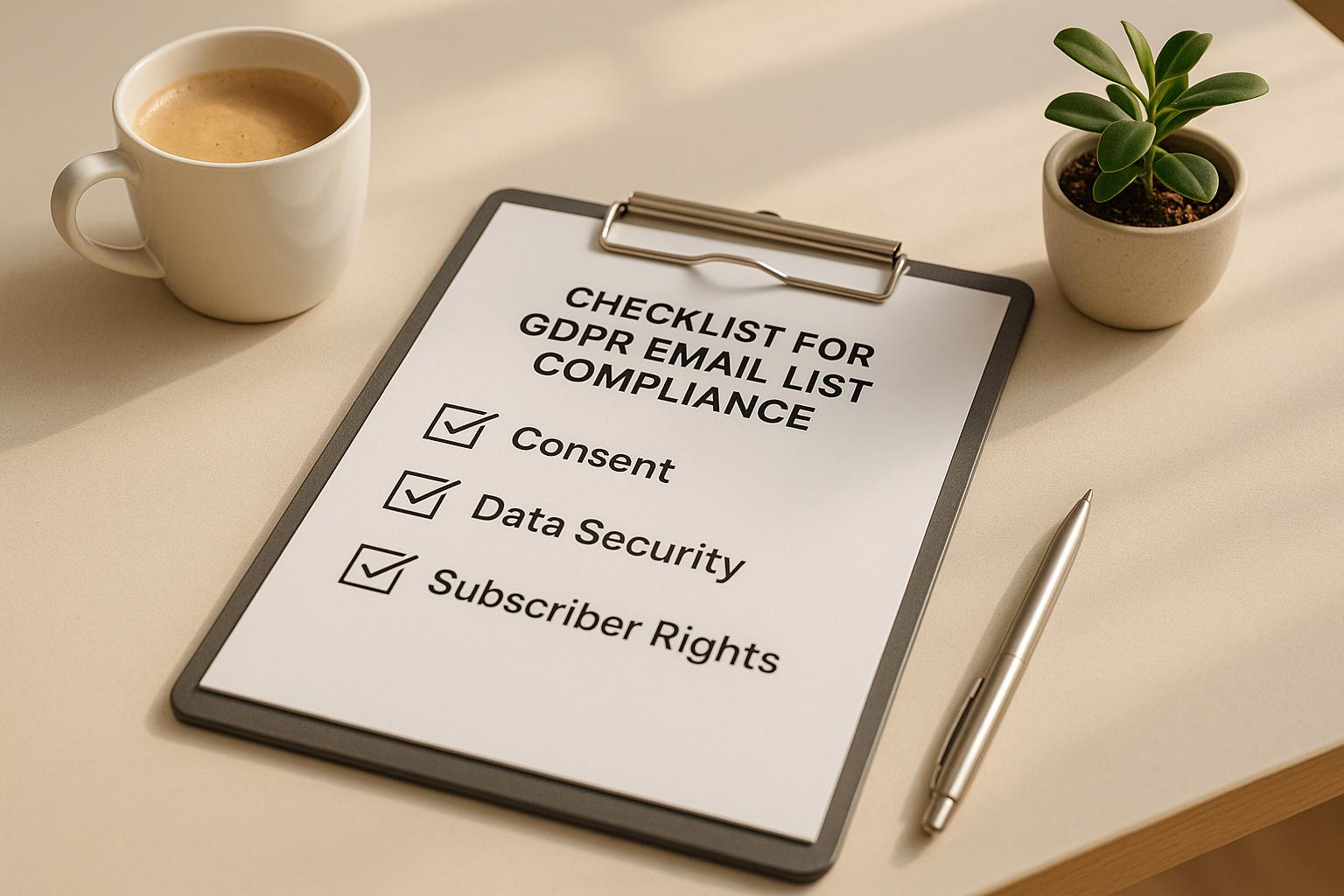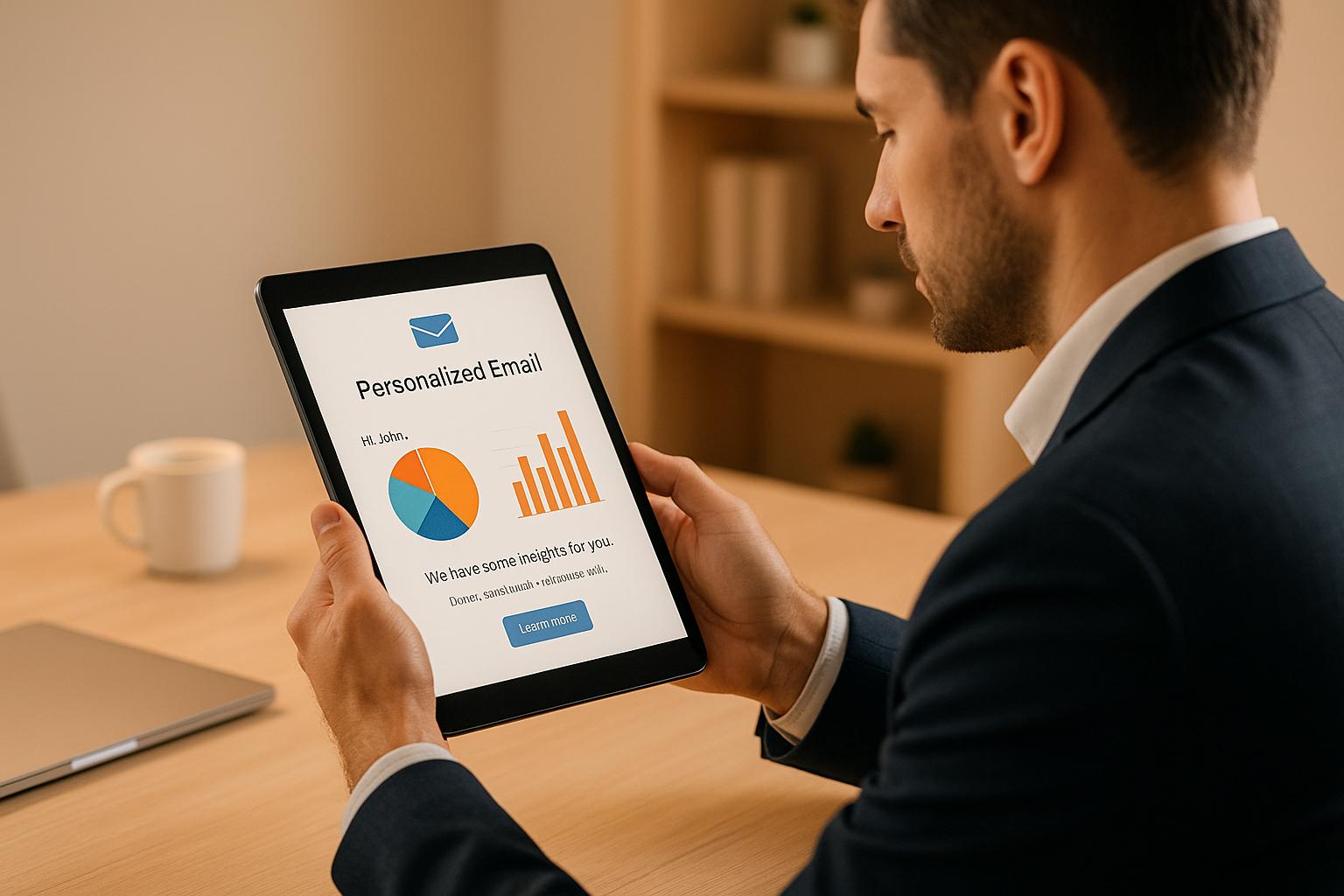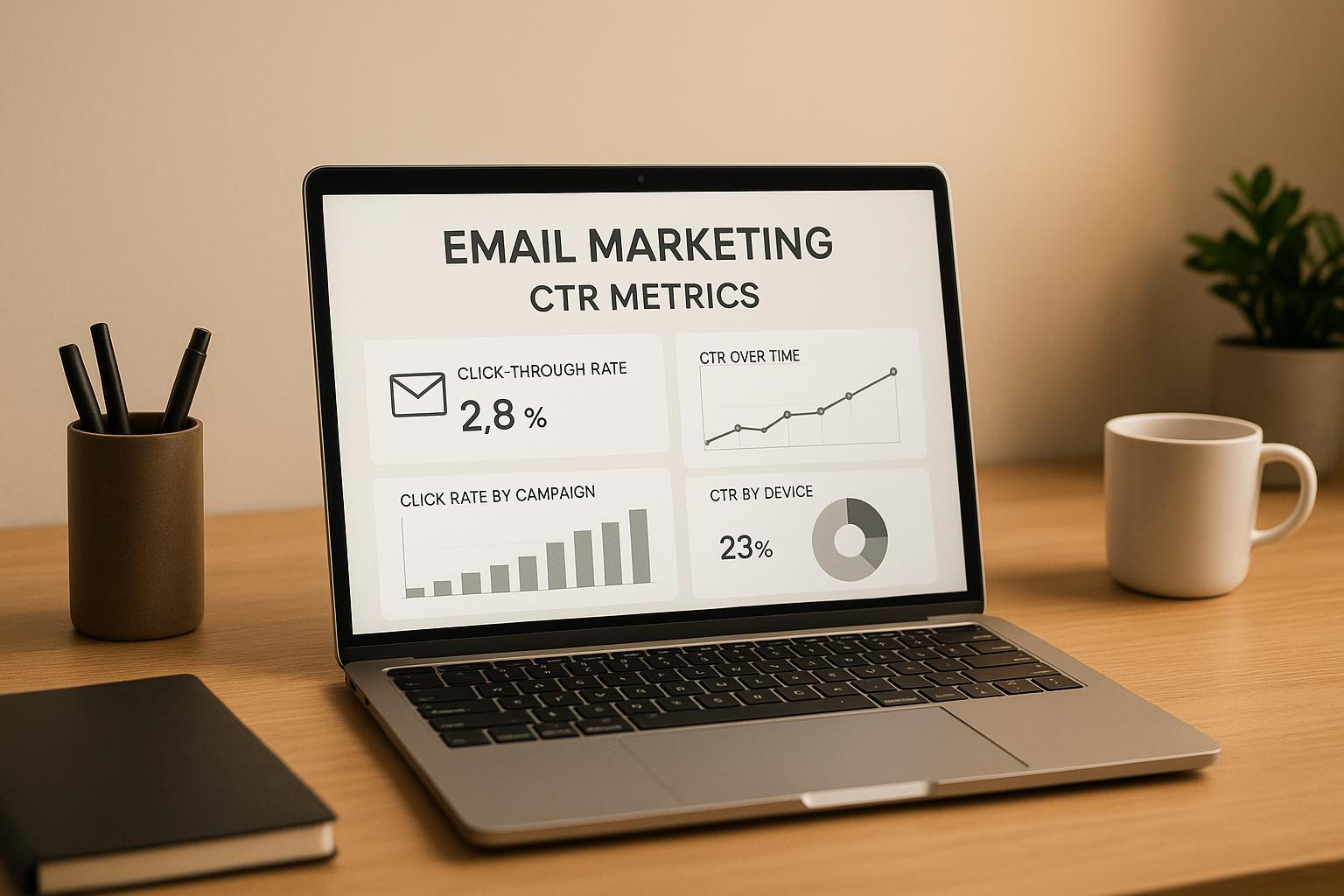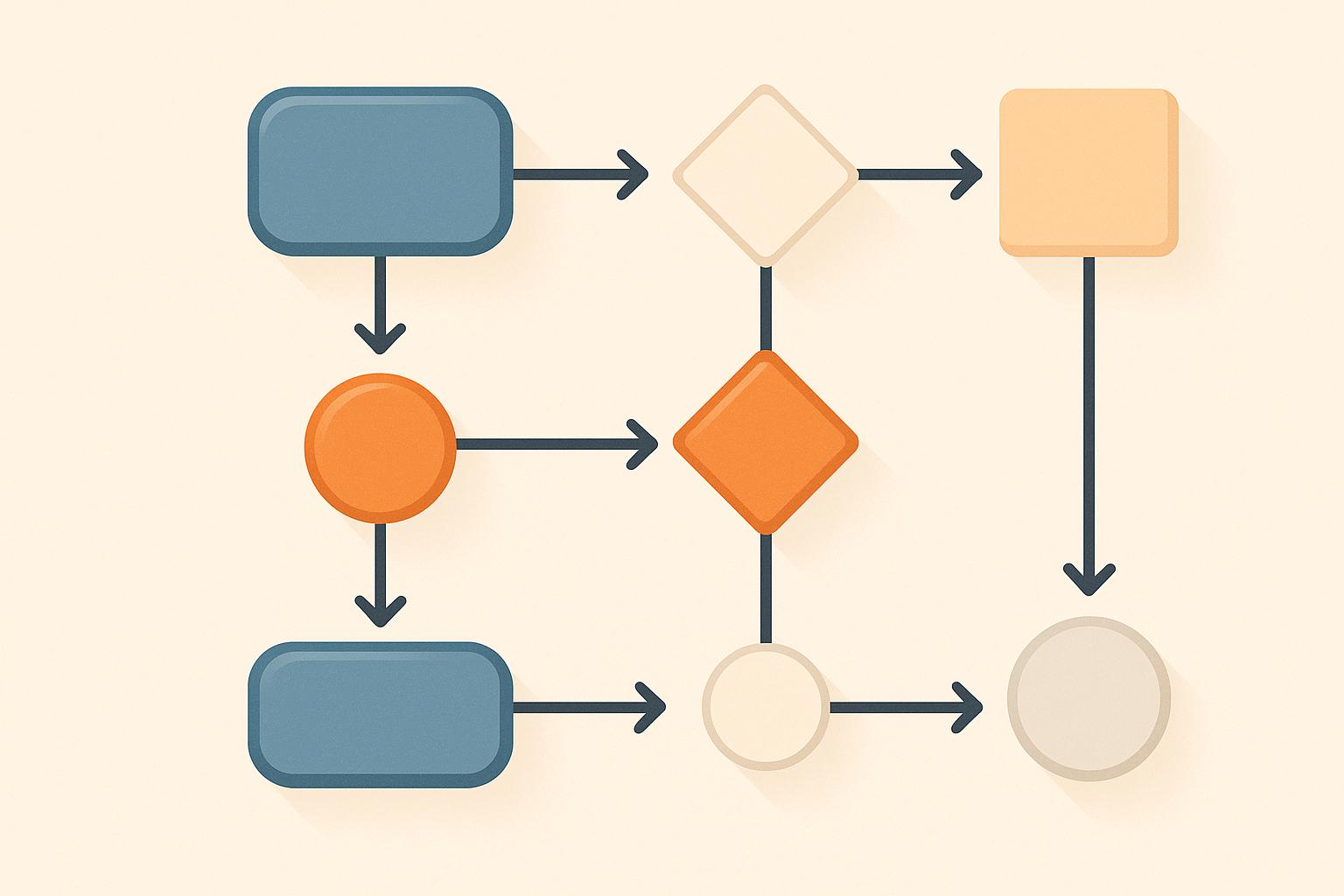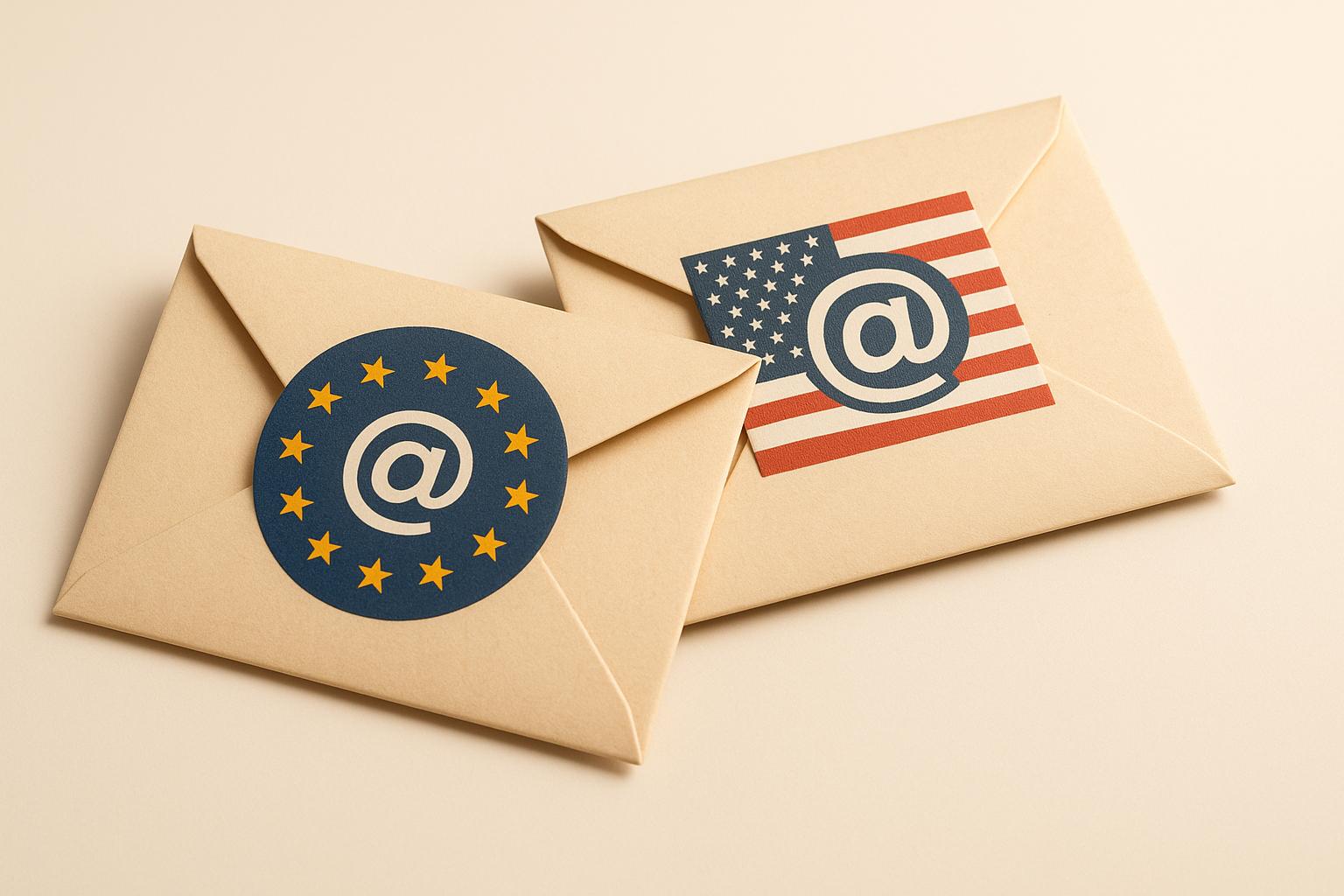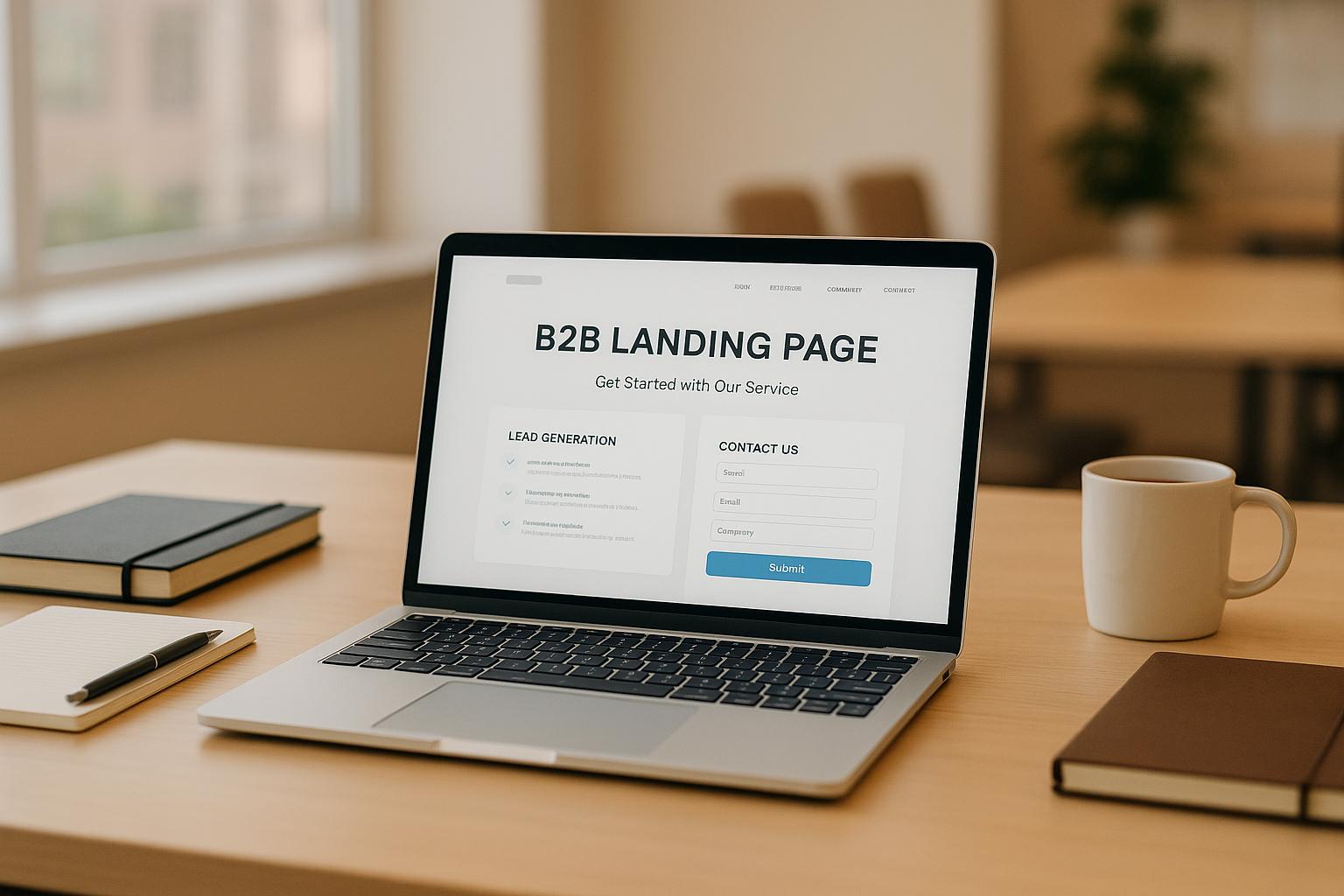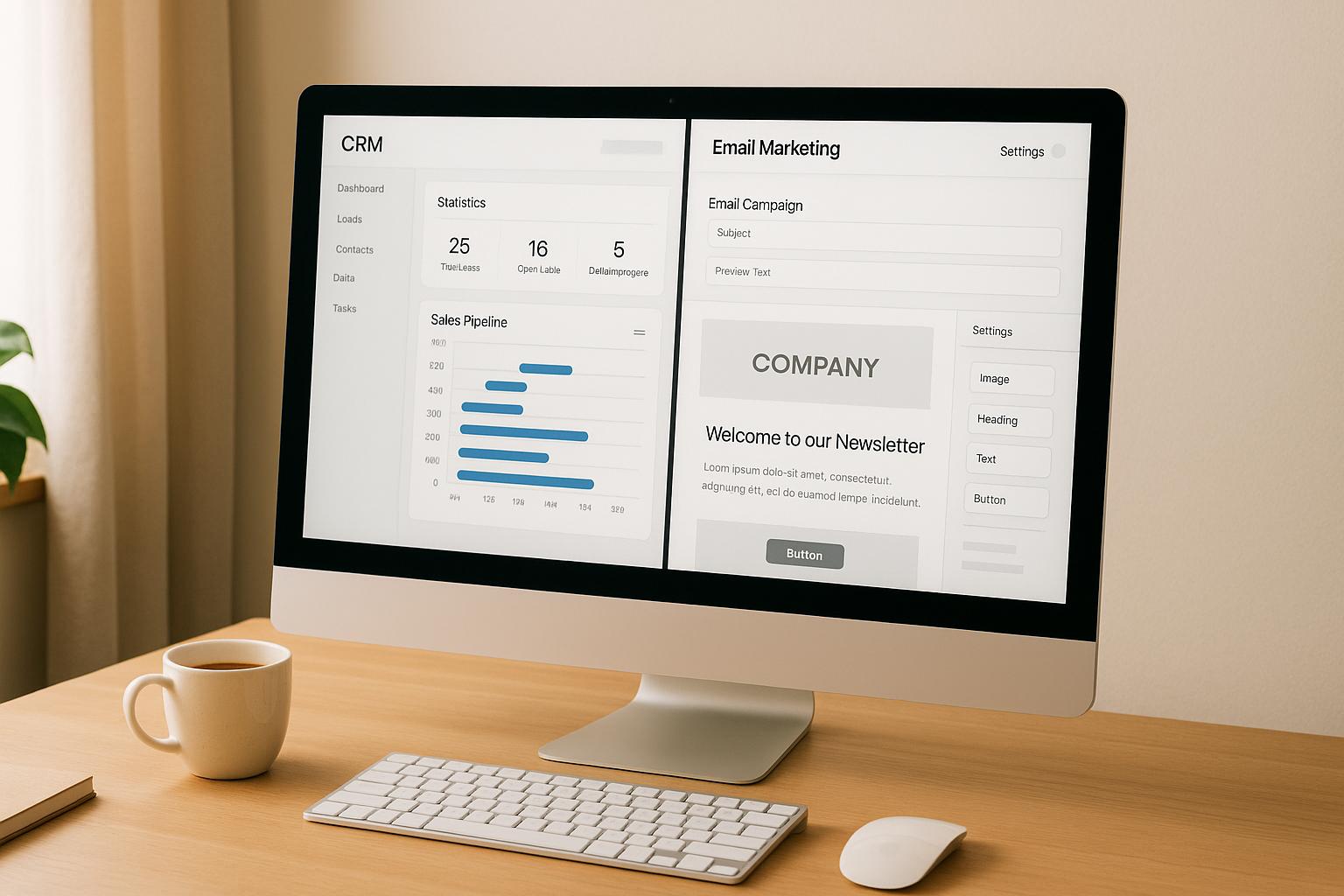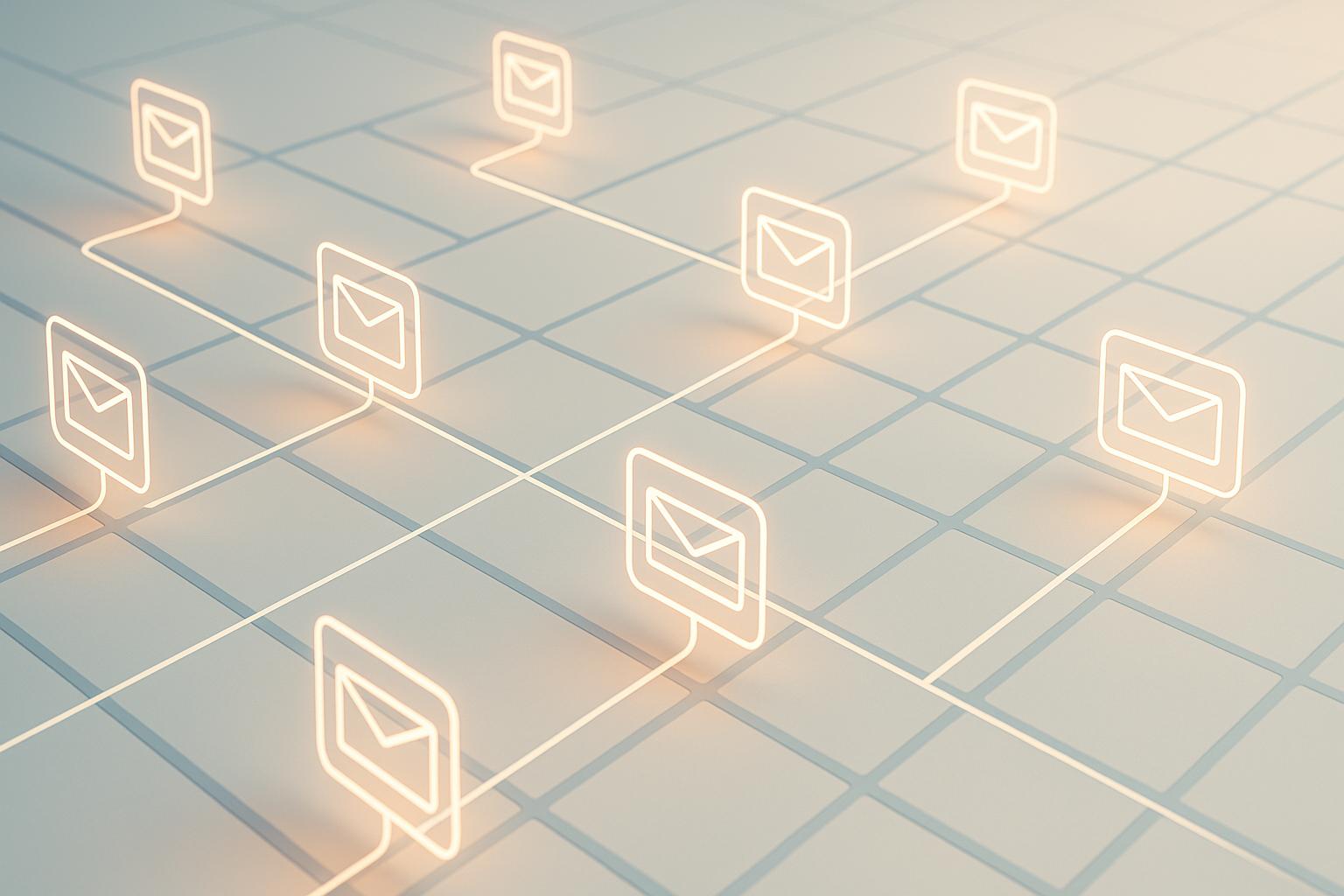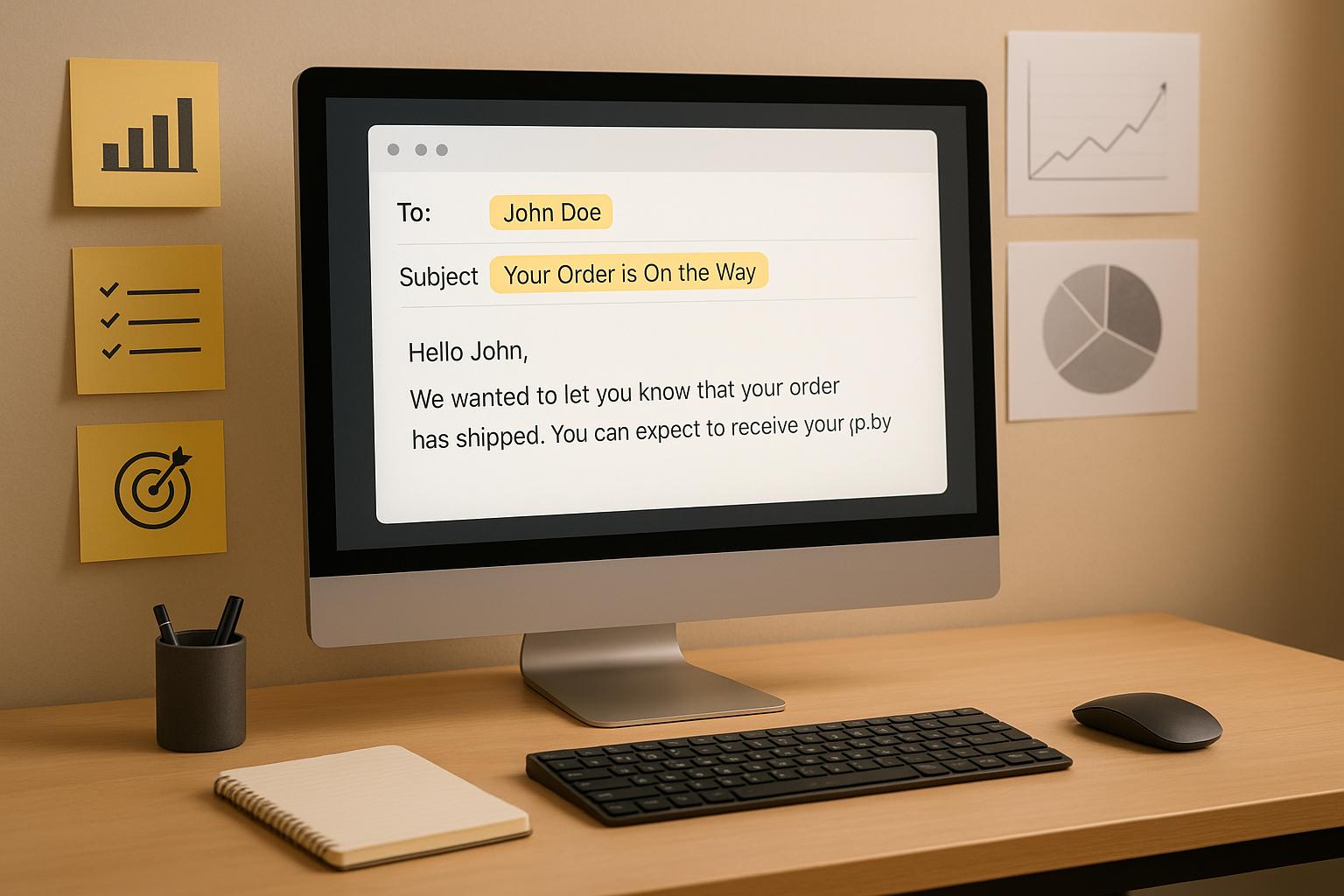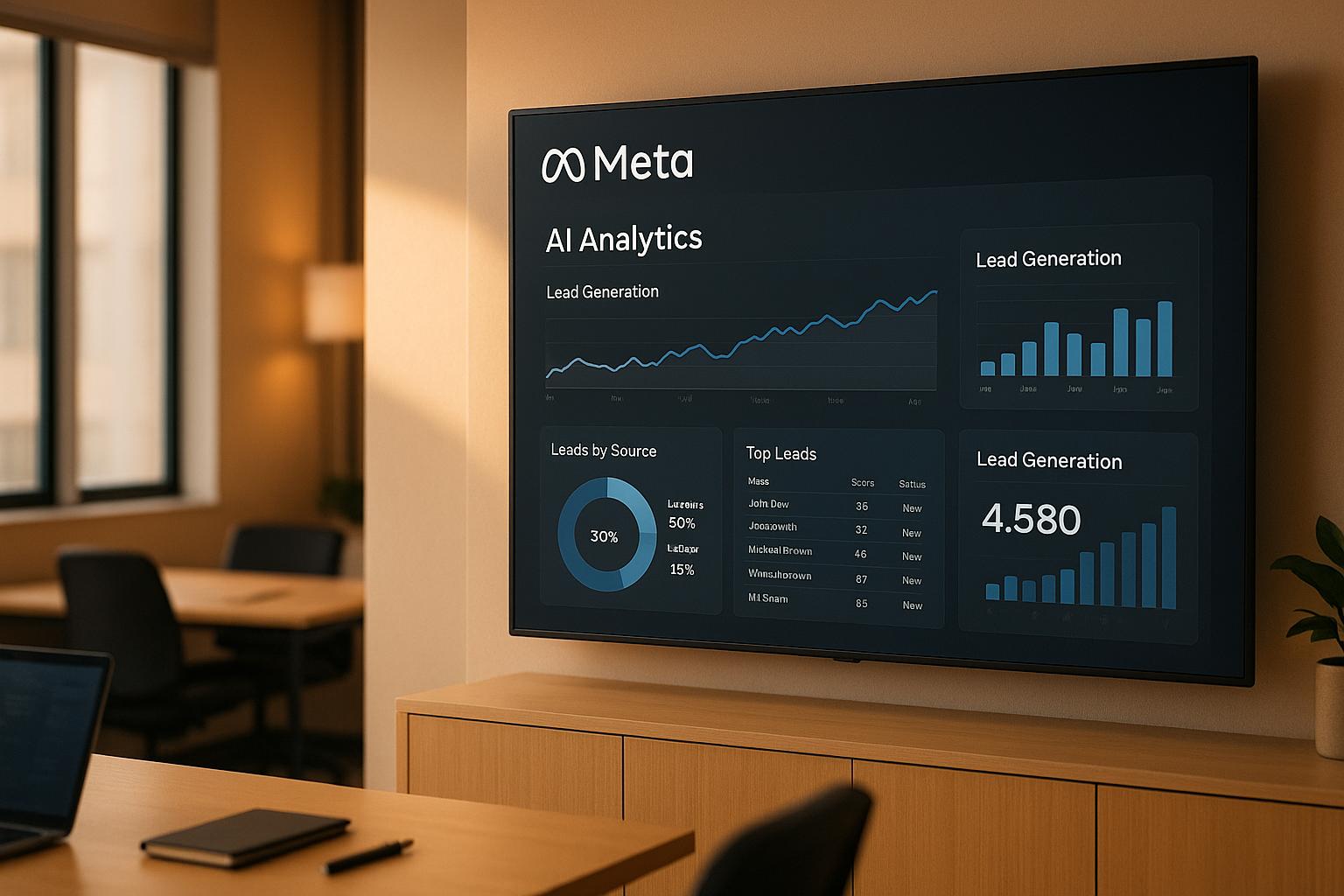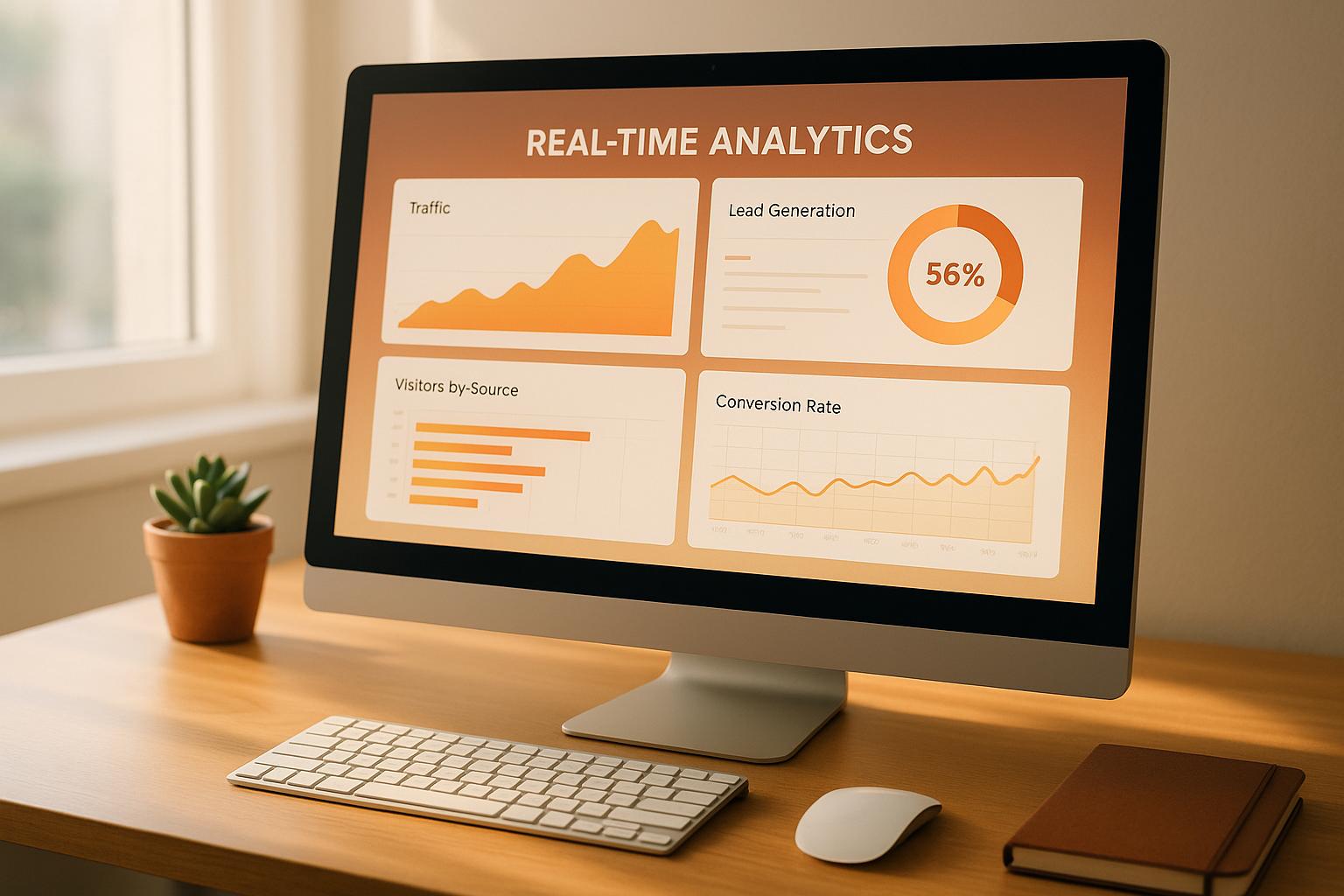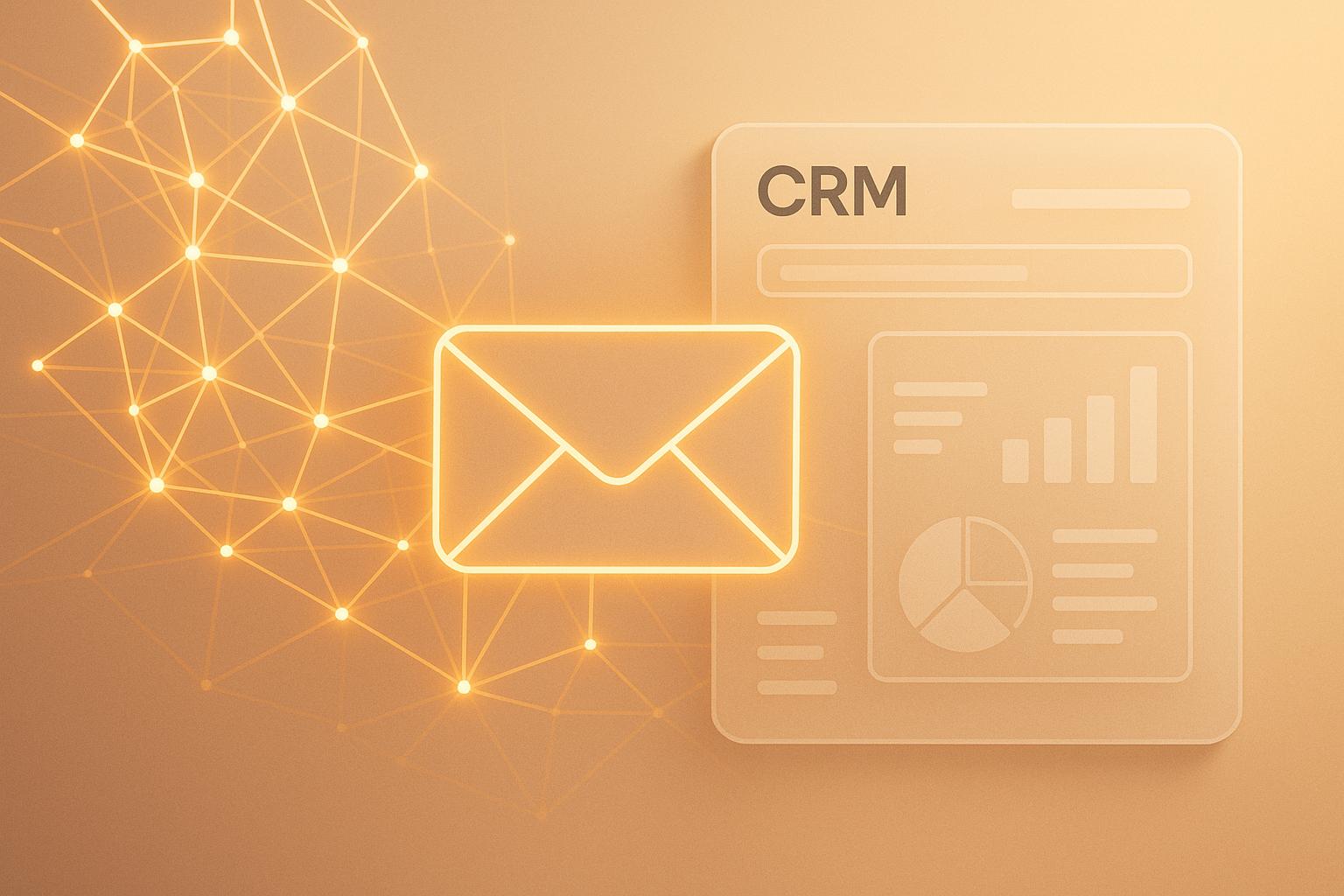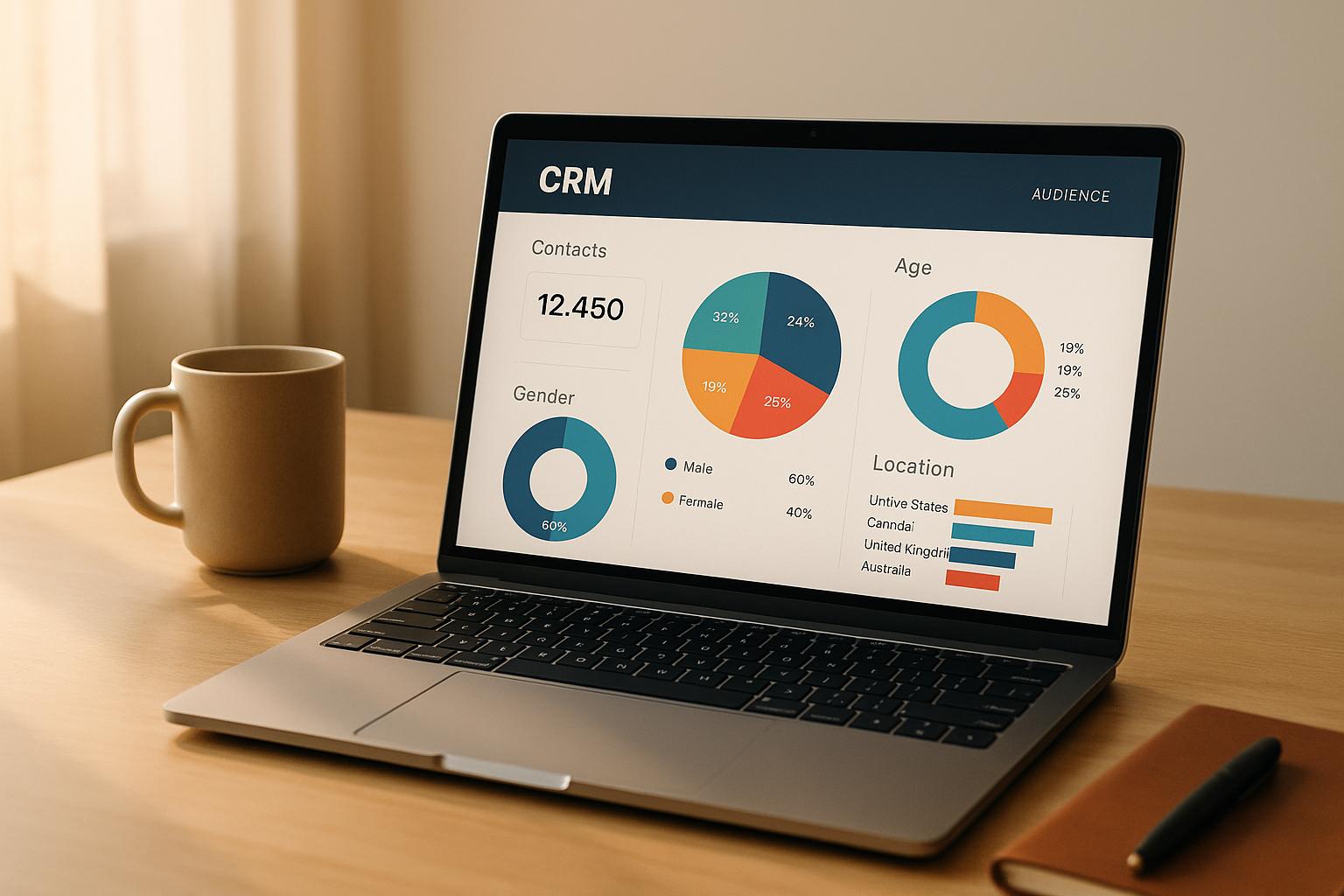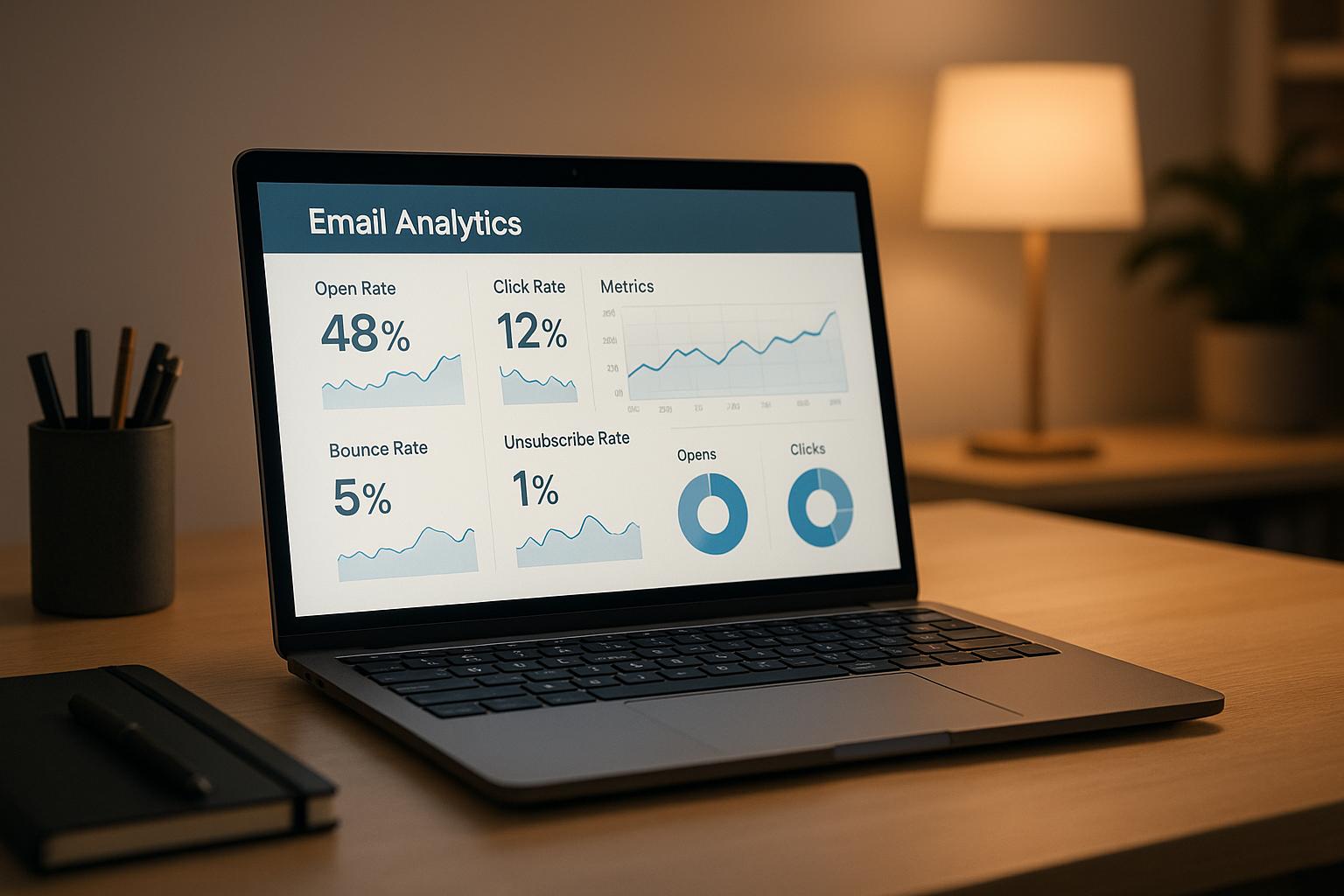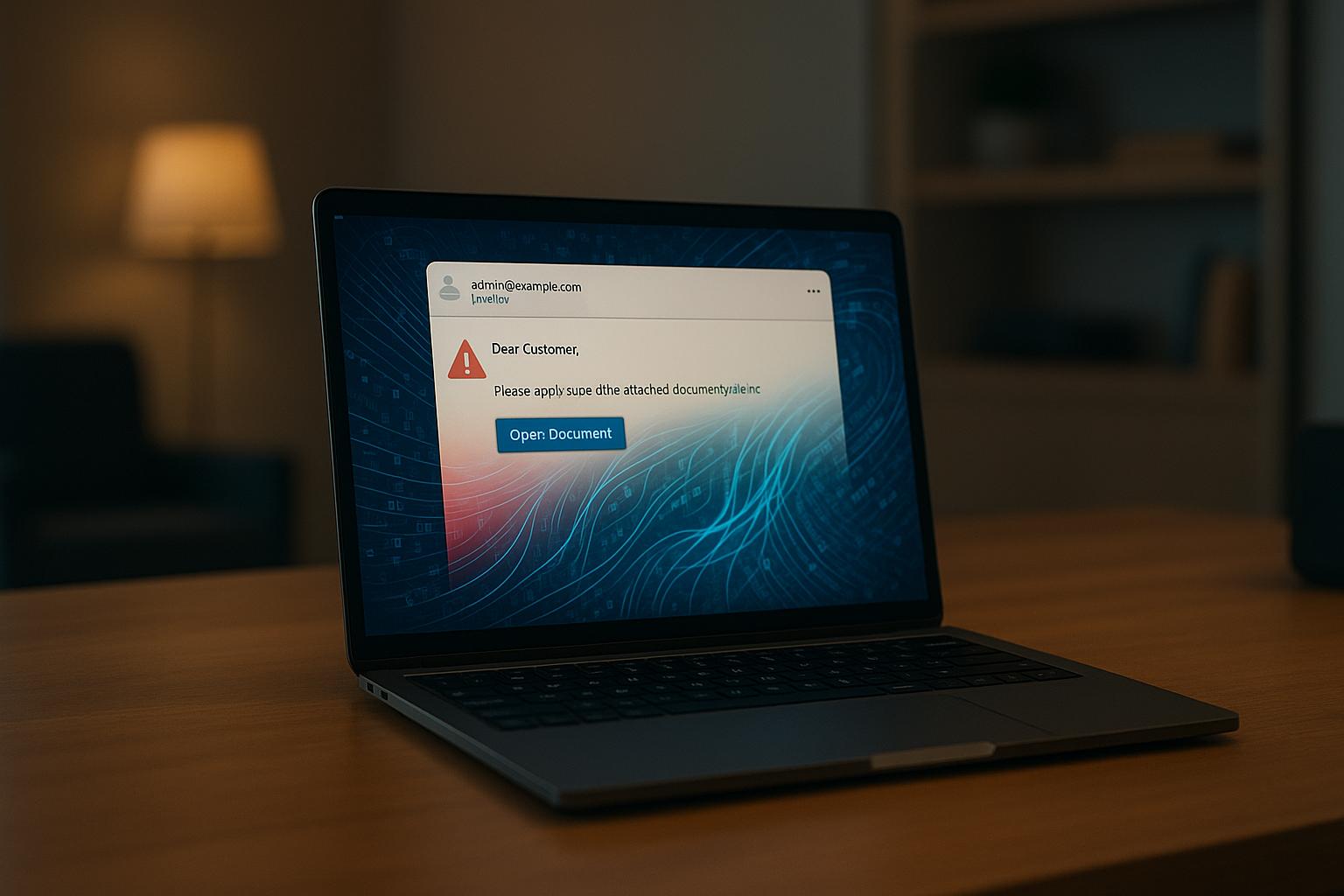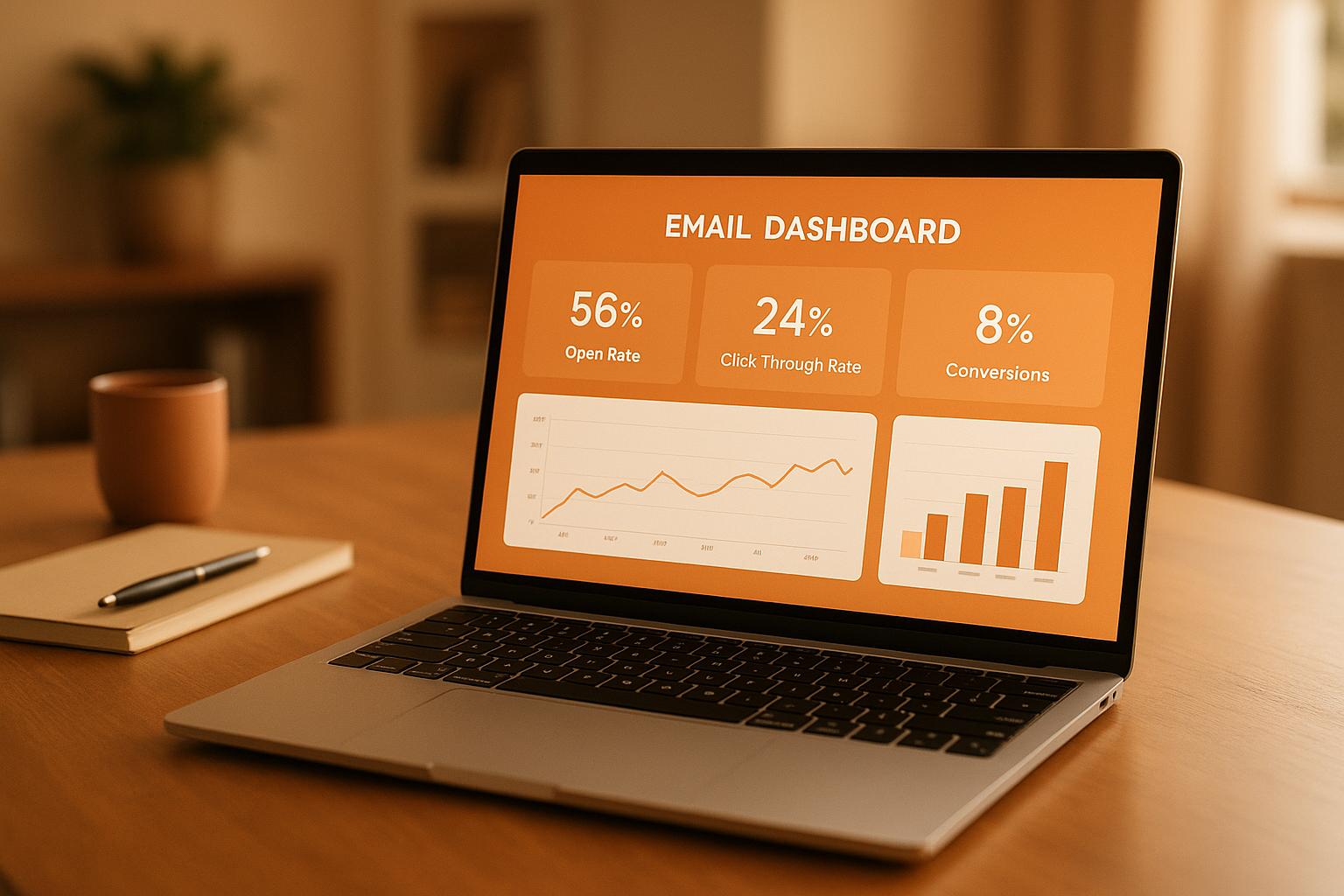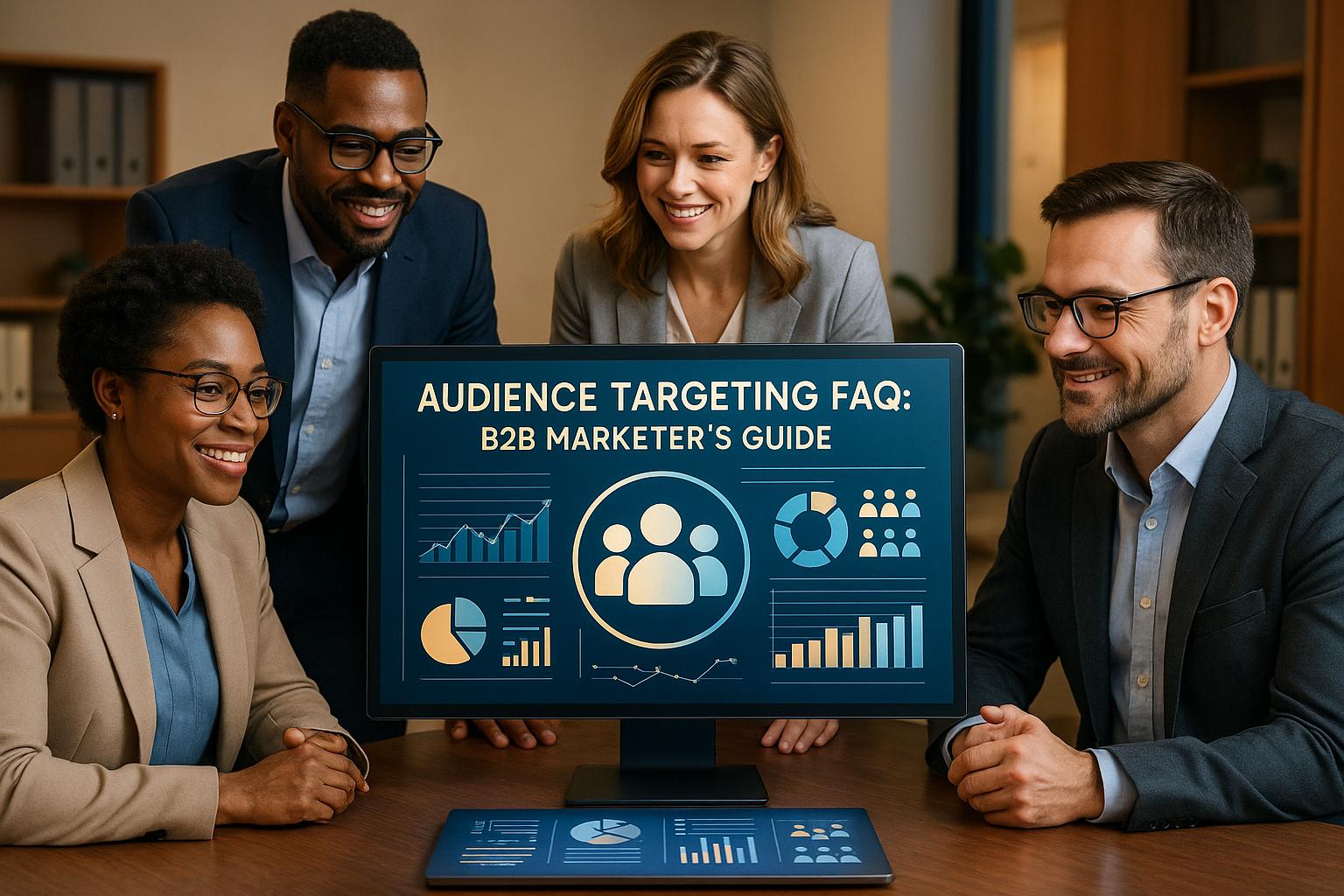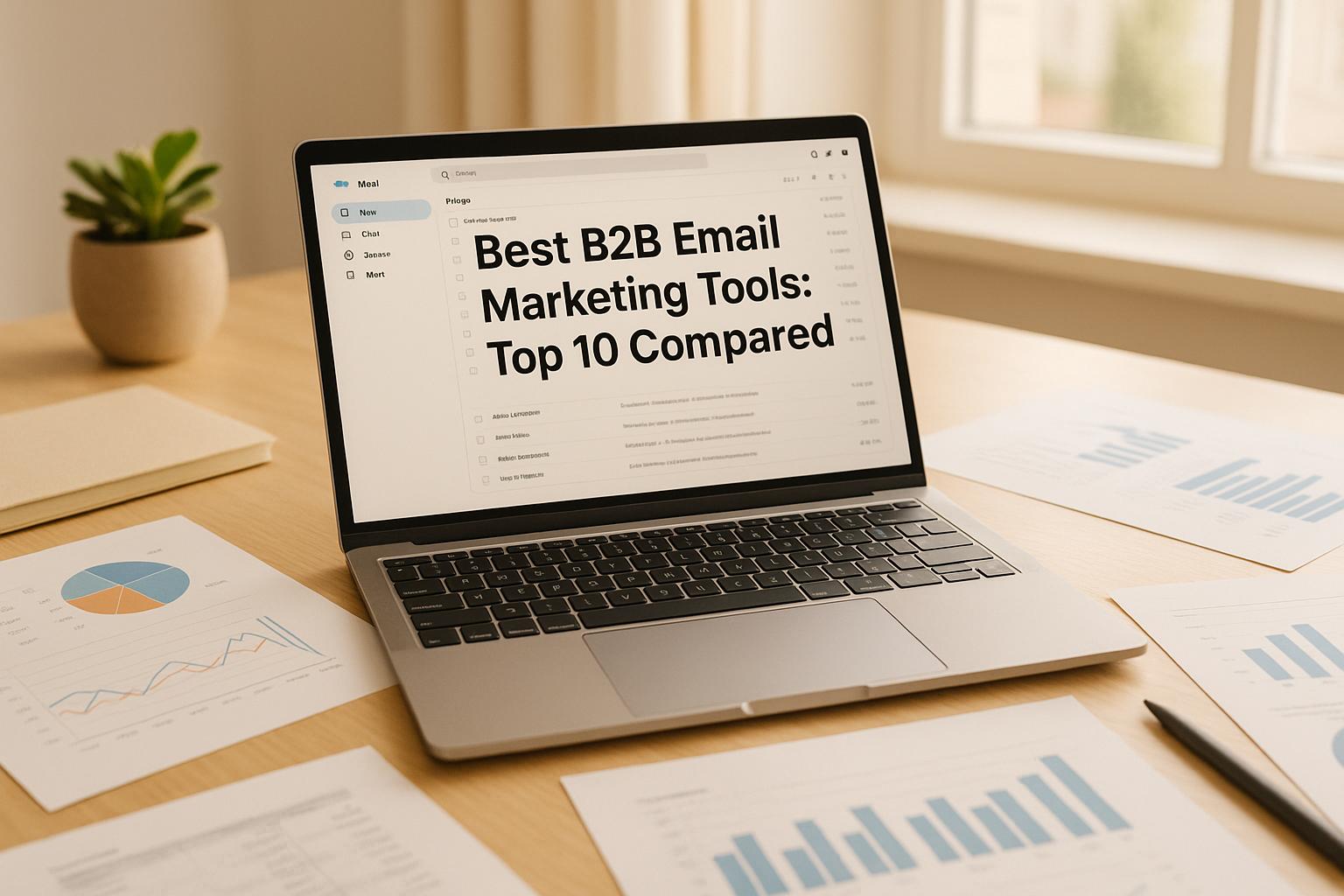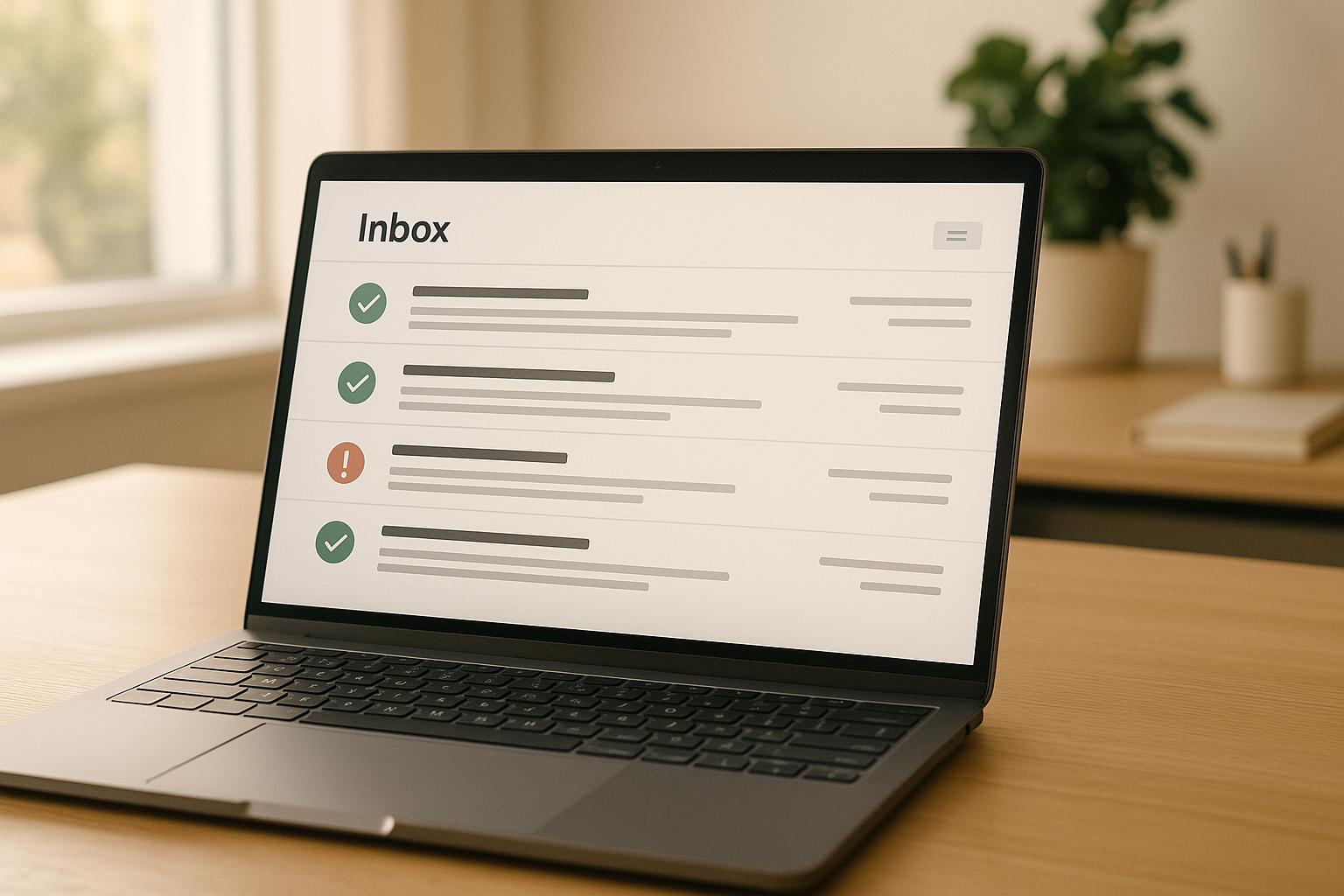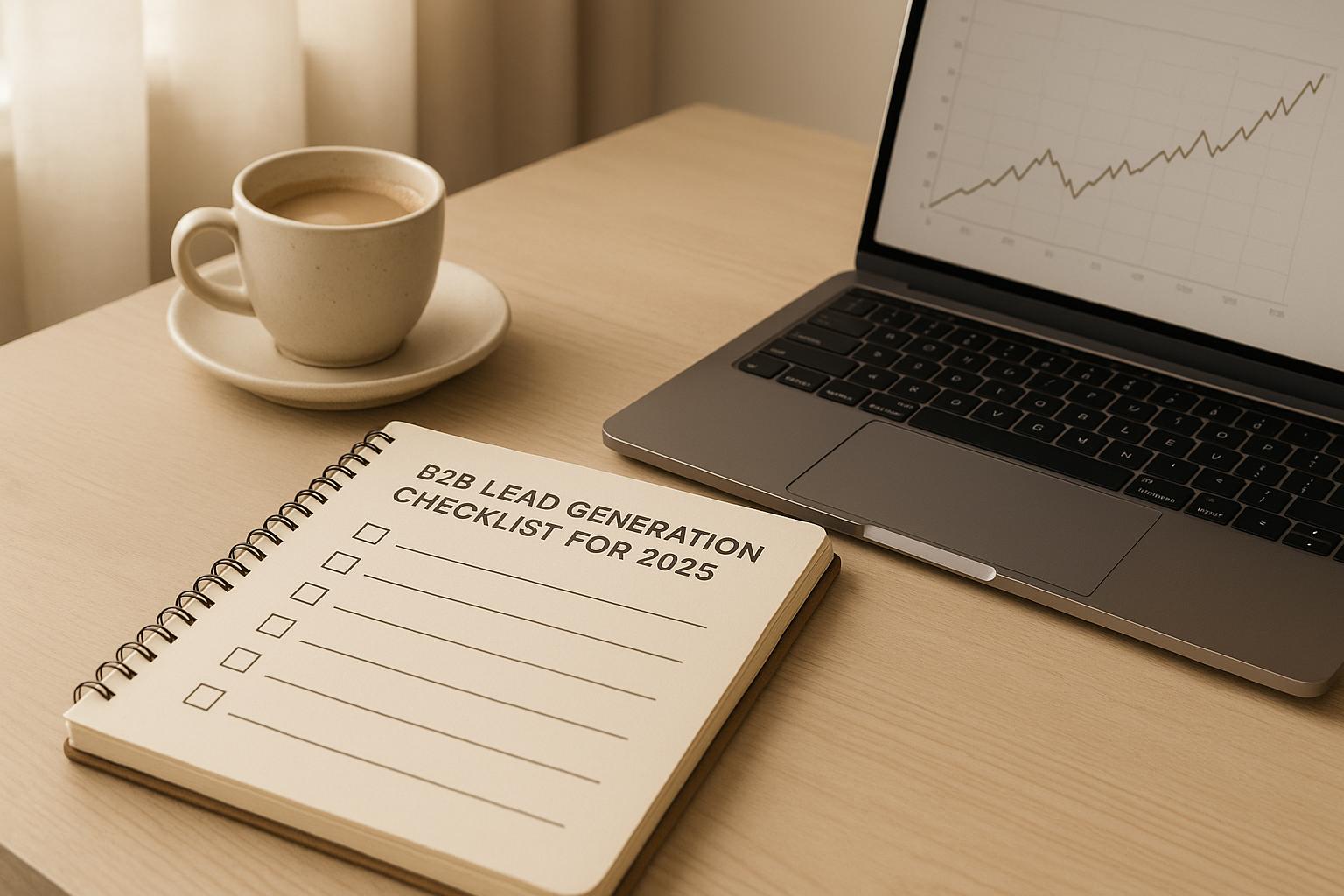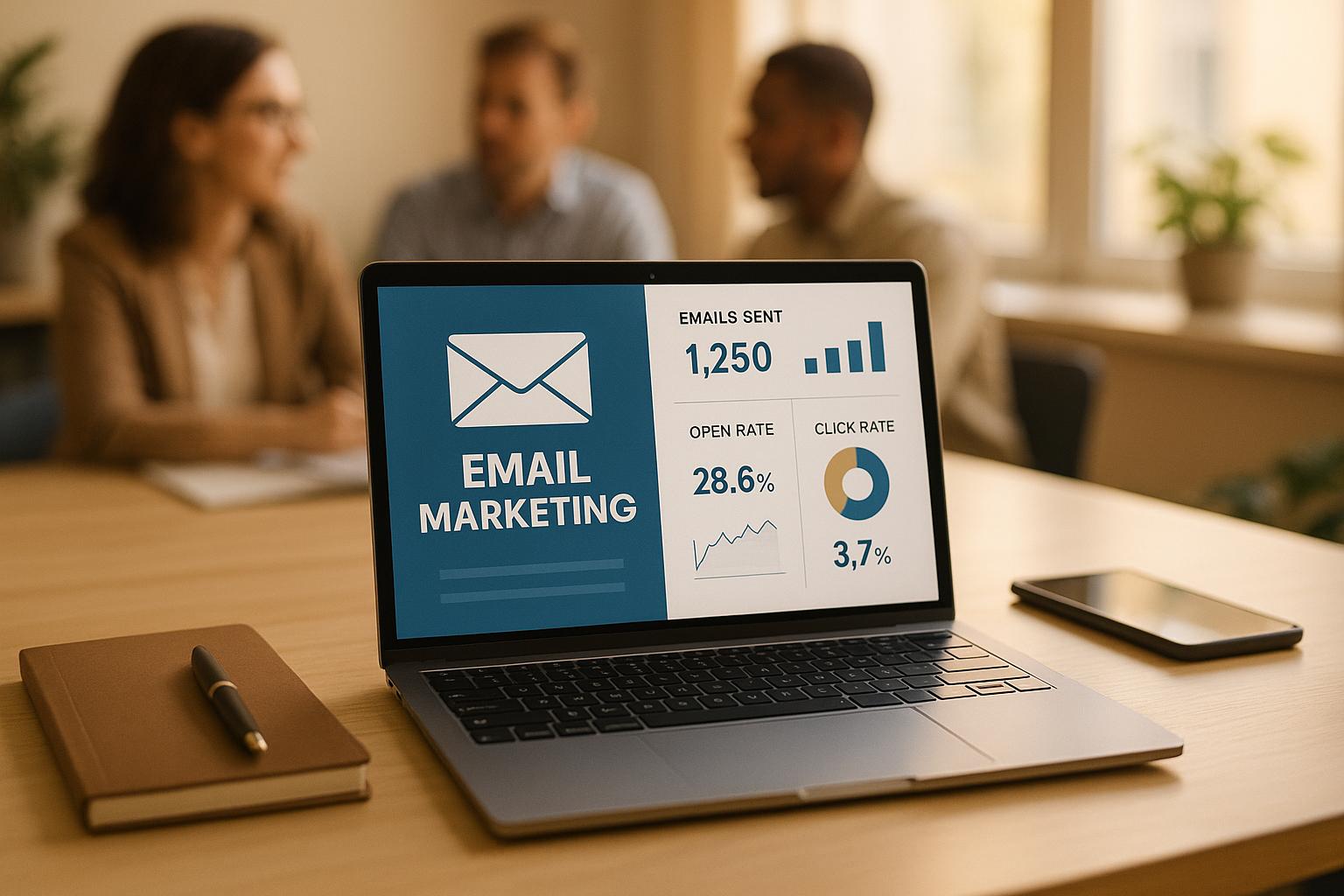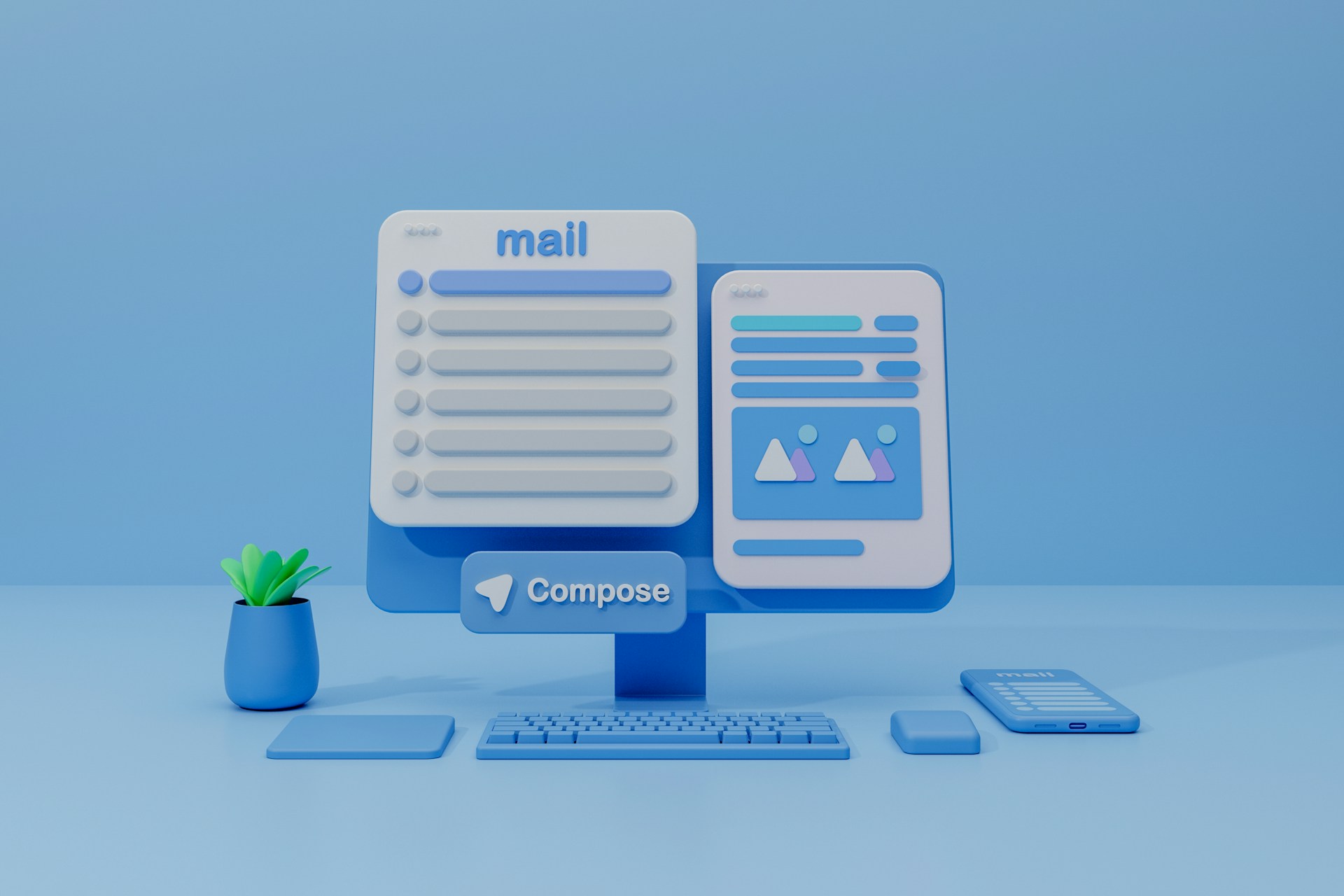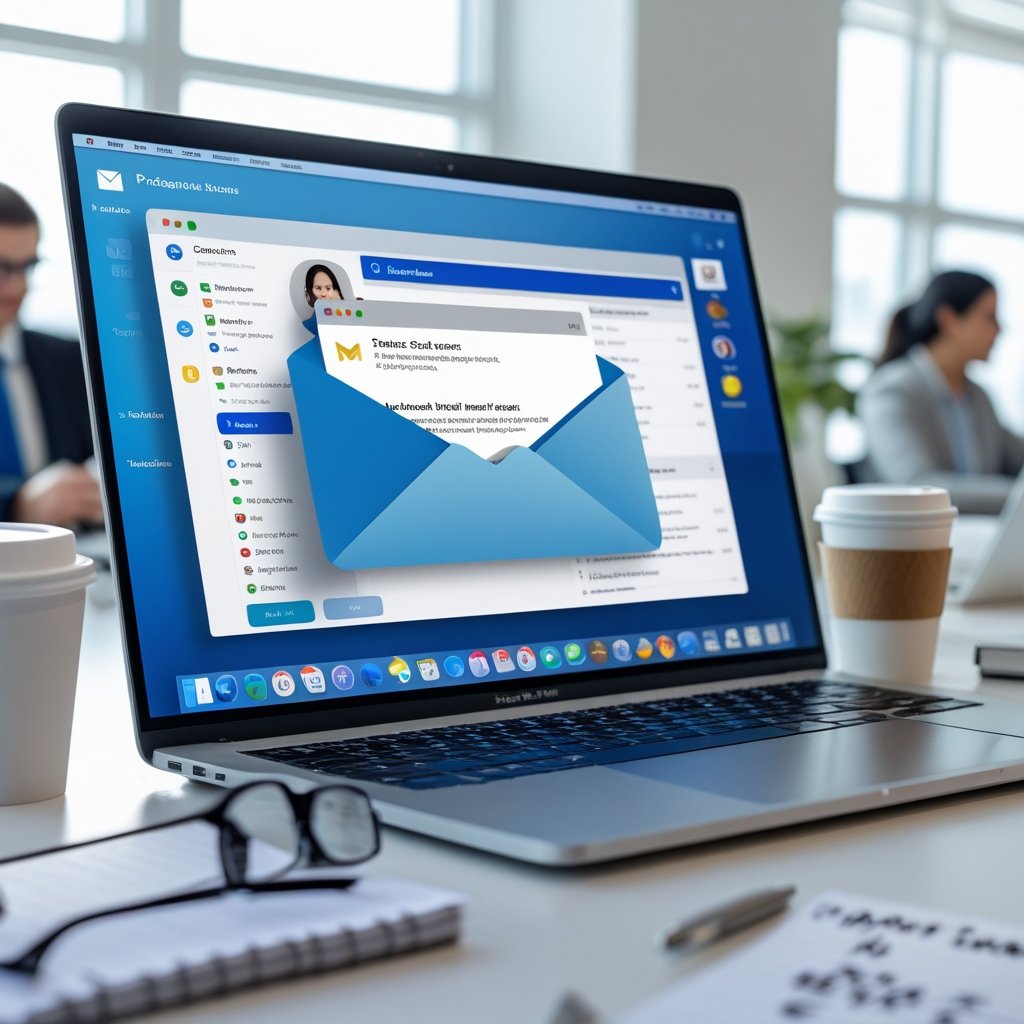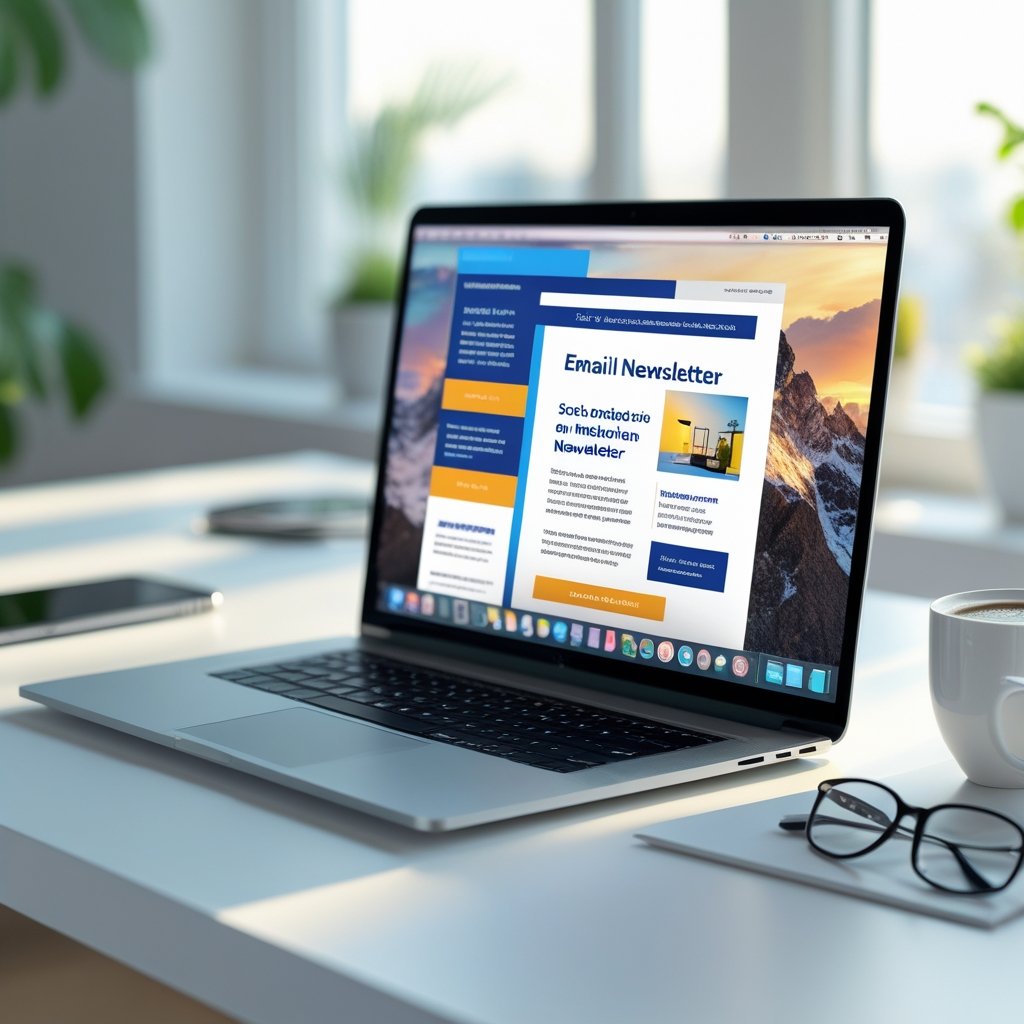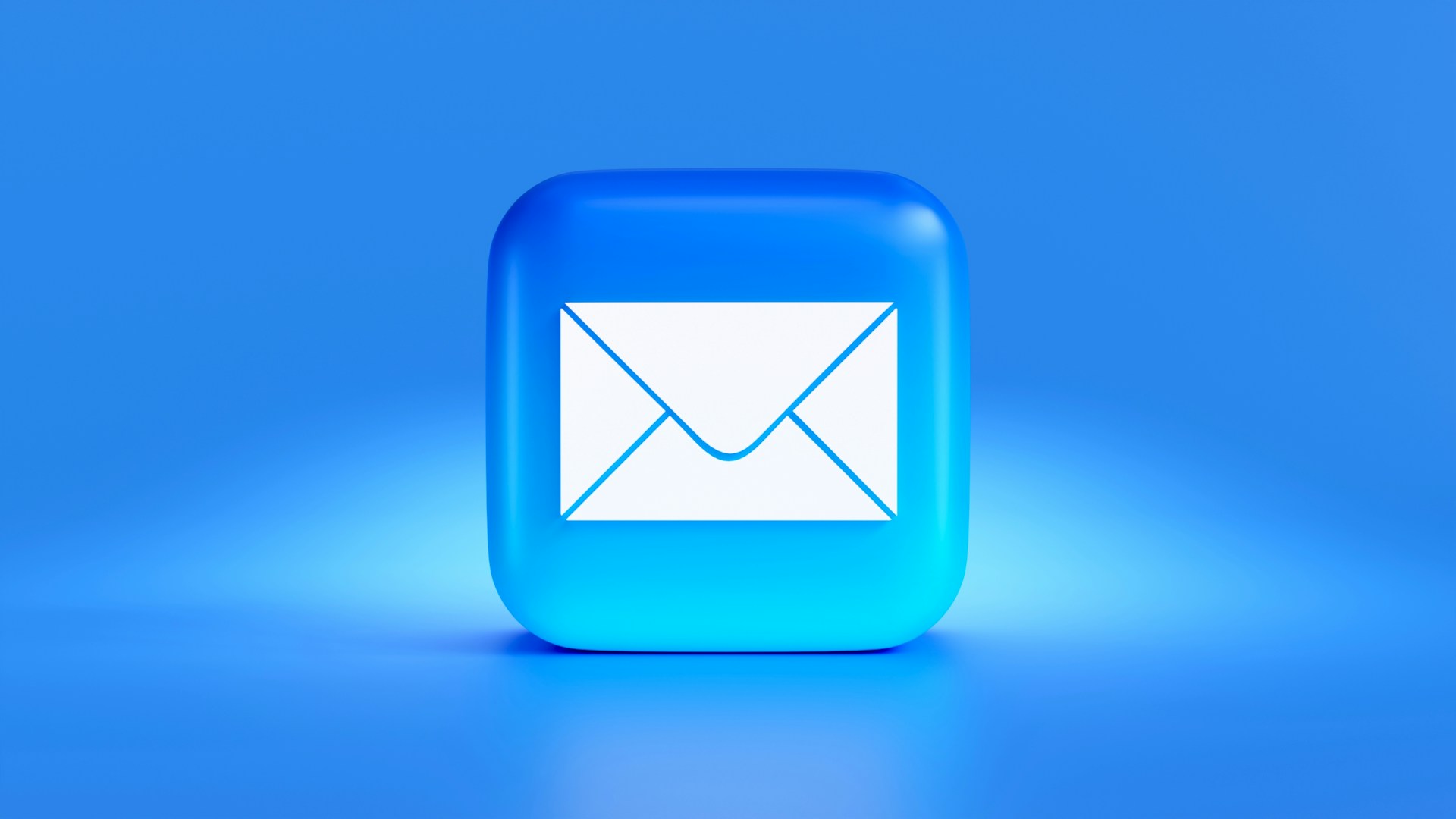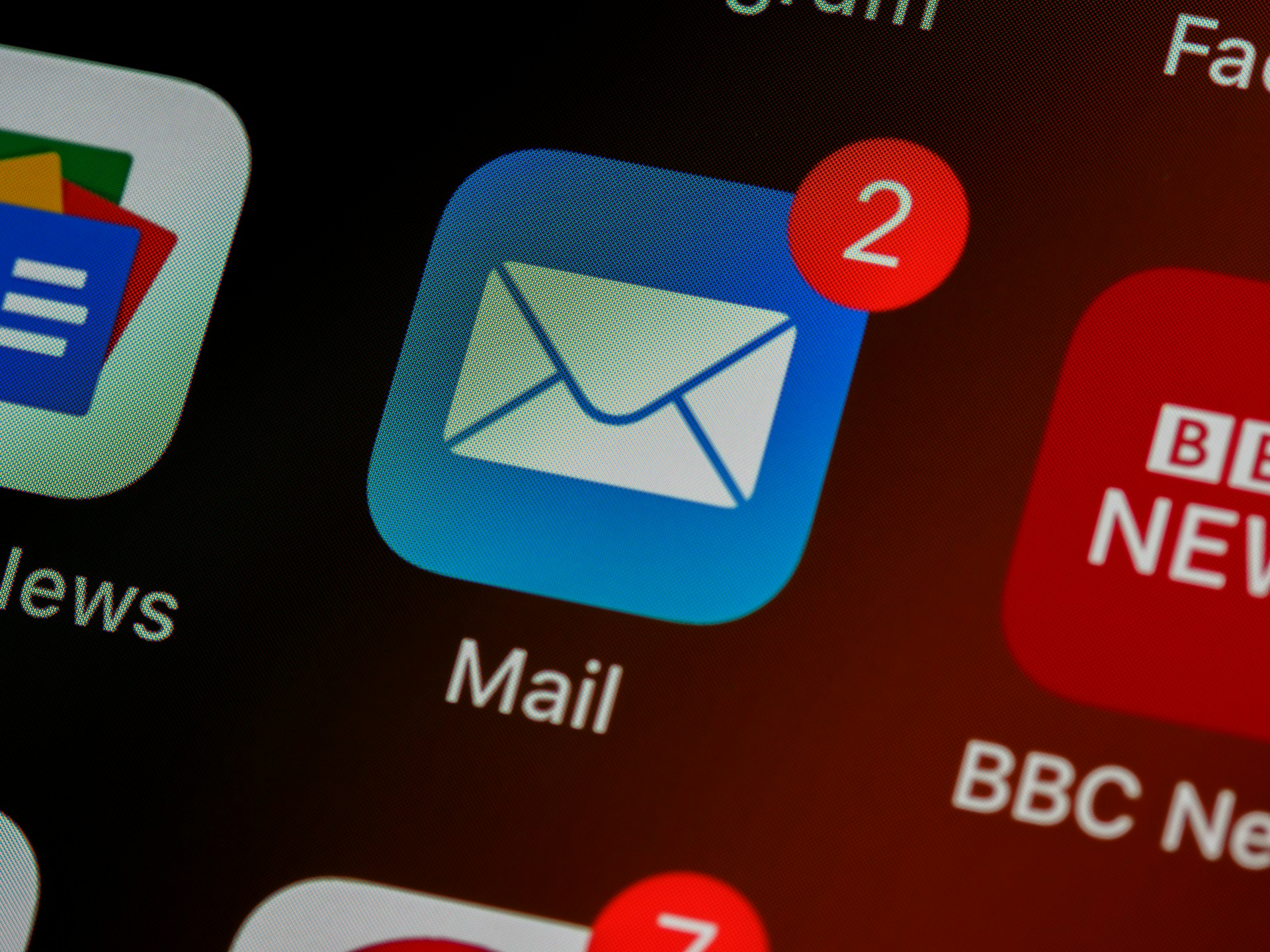How Segmented Campaigns Boost Lead Generation

Segmented email campaigns outperform generic ones by tailoring messages to specific audience groups. Here's why they matter and how they work:
- Higher Engagement: Segmented campaigns see 14.31% higher open rates and 100.95% more clicks than non-segmented emails.
- Better ROI: Segmented emails contribute to 77% of email marketing ROI and can increase revenue by up to 760%.
- Targeted Messaging: By grouping leads based on job roles, industries, or engagement levels, marketers can deliver content that resonates with each audience's unique needs.
- Improved Lead Quality: Focused content attracts leads that align more closely with your business goals.
Key Steps to Creating Segmented Campaigns:
- Collect Data: Use CRM tools to gather insights like job titles, engagement history, and company size.
- Set Goals: Define measurable objectives for each segment, such as boosting open rates for specific roles.
- Personalize Content: Tailor messages to meet the priorities of different groups (e.g., C-suite vs. end users).
- Monitor Performance: Track metrics like open rates and conversions, and adjust strategies as needed.
Segmented campaigns aren't just effective - they're essential for maximizing lead generation and improving email marketing ROI.
8 Best Ways To Segment Your Email List (Klaviyo-friendly Tutorial)
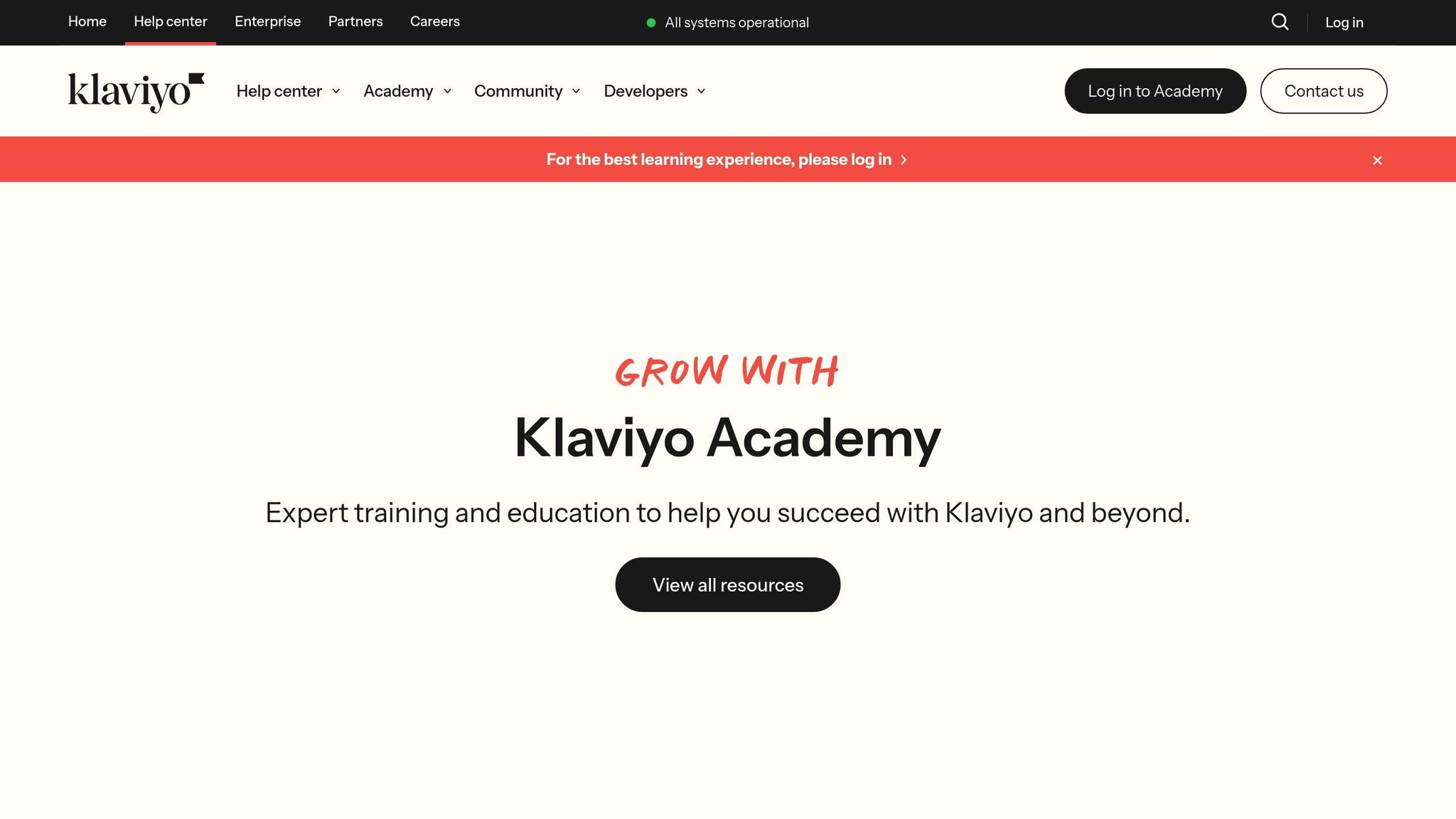
Key Segmentation Criteria for Effective Campaigns
When it comes to B2B marketing, not all segmentation strategies are equally effective. The trick lies in selecting data points that genuinely influence your audience's decision-making and align with their business needs. The most impactful segments combine layers of data to create highly focused groups that resonate with tailored messaging. Here's a closer look at the critical factors that make this possible.
Demographic and Firmographic Data
Details like job title, company size, industry, and annual revenue are foundational for identifying and targeting B2B leads. These firmographic insights don’t just tell you who your leads are - they reveal the business environment they operate in and the challenges they’re likely navigating.
For instance, startups often prioritize cost-effective solutions, while larger enterprises focus on scalability and regulatory compliance. Similarly, industry-specific concerns vary widely: a healthcare company grappling with HIPAA compliance faces challenges that differ from a retail business managing seasonal sales cycles. Revenue size also plays a role - companies earning $1M annually have vastly different needs compared to those pulling in $100M. These distinctions shape how you position your messaging, from tone to budget considerations.
Platforms like Breaker excel at precision targeting by leveraging firmographic data to identify ideal customer profiles (ICPs). Using AI enrichment and proprietary data, they ensure segments are built on accurate, up-to-date information. This approach enables hyper-personalized messaging that boosts conversion rates.
Behavioral and Engagement-Based Segmentation
Understanding a lead’s behavior can be a game-changer. Engagement-based segmentation focuses on past actions to predict future interest, making it one of the most effective tools for refining your audience reach. By tracking metrics like email opens, click-through rates, website visits, content downloads, and event attendance, you can gauge a lead’s interest level and tailor your approach accordingly.
- Highly engaged leads (e.g., those who’ve interacted with your emails or website within the last 30 days) are primed for advanced content, detailed product information, or direct outreach.
- Moderately engaged leads (e.g., those active within the past 90 days) benefit from educational content, case studies, and nurturing campaigns that build trust without overwhelming them.
- Dormant leads (no engagement in over 90 days) may need reactivation efforts. “We miss you” campaigns offering special incentives or valuable resources can sometimes reignite interest. If these leads remain unresponsive, it’s best to remove them to maintain list hygiene.
Engagement-based segmentation has been shown to boost click-through rates by as much as 250% compared to non-segmented campaigns.
Role-Based Segmentation
Even within the same company, different roles come with unique priorities, challenges, and levels of decision-making authority. Role-based segmentation ensures your messaging resonates with each stakeholder's specific concerns.
- C-suite executives are interested in high-level insights - think strategic impact, ROI, and competitive advantages.
- Mid-level managers look for actionable solutions and guidance to help them build a business case for senior leadership.
- End users care about functionality and ease of use, focusing on how a product will simplify their daily tasks.
Tailoring content to these roles can improve conversion rates by 42% compared to generic messaging. Tools like Breaker further refine this approach by offering role-specific targeting for groups like Product-Led Growth Teams, B2B Growth Marketers, and Enterprise Sales professionals. This ensures your campaigns reach the right decision-makers with messaging that drives results.
Step-by-Step Guide to Building Segmented Campaigns
Turning segmentation theory into practice requires a clear process. These steps will help you transform subscriber data into highly targeted and effective email campaigns.
Collect and Analyze Subscriber Data
Every successful segmented campaign begins with solid data. To make segmentation work, you need accurate and detailed subscriber information.
Start by integrating your CRM with marketing automation tools. This allows you to centralize data like demographics, firmographics, and behavior patterns in one place. Key data points to focus on include job titles, company size, industry, annual revenue, email engagement, website activity, content downloads, and event participation.
Keep your data clean and reliable. Use automated tools to validate email addresses, update subscriber preferences, and perform quarterly audits. Eliminate duplicate entries and flag incomplete profiles for follow-up. Clean data ensures your campaigns are built on a solid foundation.
Once your data is ready, set clear goals that align with your segmentation insights.
Define Clear Segmentation Goals
Specific, measurable goals are essential for effective segmentation. These goals should align with your broader business objectives and be based on historical performance. For instance, you might aim to boost open rates for C-suite executives by 15%. Use past campaign data and input from your sales team to ensure your goals are realistic yet ambitious.
Different segments will naturally have different priorities. For example, high-value accounts might focus on relationship-building strategies, while smaller prospects might require quicker, results-oriented approaches. Reflect these differences in your goals.
Make sure to document these objectives and share them with your team. Sales teams can provide insights into which segments are likely to convert, while customer success teams can identify trends among satisfied clients. This collaboration ensures your segmentation strategy is both practical and effective.
Once goals are established, you can focus on creating content tailored to each segment.
Create Customized Content for Each Segment
Personalized content is the backbone of segmented campaigns. To engage and convert, your message must address the unique challenges and priorities of each audience.
For C-suite executives, focus on concise messaging that highlights strategic benefits like ROI and competitive advantages. Subject lines like "3-Minute ROI Analysis for [Company Name]" or "Executive Brief: Key Trends in [Industry]" can grab their attention quickly.
Mid-level managers, on the other hand, often need more detailed content to build a case for senior leadership. Offer resources like implementation guides, timelines, and case studies from similar organizations to help them prepare for internal discussions.
End users are typically interested in how your solution improves their daily tasks. Use content that showcases functionality, reduces manual effort, or solves specific pain points. Screenshots, video tutorials, and step-by-step guides are particularly effective for this audience.
Behavioral triggers can further enhance personalization. For instance, if a subscriber downloads a whitepaper, follow up with an email featuring related case studies to reinforce your value. Dynamic content blocks can also help tailor offers, testimonials, and calls-to-action based on each segment’s characteristics.
After launching your campaigns, it’s crucial to track performance and make adjustments as needed.
Monitor and Adjust Campaigns
Constant monitoring and tweaking are key to keeping your campaigns effective as subscriber behaviors evolve.
Keep an eye on metrics like open rates, click-through rates, conversion rates, and unsubscribes. A/B testing can help you quickly identify what’s working and what’s not. Tools like Breaker’s real-time analytics can provide immediate insights into performance trends, helping you react quickly to changes. Research shows segmented campaigns achieve 14.31% higher open rates and 100.95% higher click-through rates compared to non-segmented ones.
Use A/B testing to refine your approach. Experiment with subject lines, send times, content formats, and calls-to-action to see what resonates best with each segment. Set up automated alerts to flag significant performance shifts. If engagement drops in a previously strong segment, investigate causes like outdated messaging or data issues.
Regularly revisit and update your segments based on new data and changing behaviors. As roles and market conditions shift, refining your segmentation ensures your campaigns stay relevant. Collaborate with your sales team to identify which leads are converting and use that feedback to further fine-tune your strategy.
sbb-itb-8889418
Measuring the Impact of Segmented Campaigns
Tracking the performance of your campaigns is crucial to demonstrating ROI and fine-tuning your strategy. By building on segmentation techniques, measuring results ensures you can validate and improve your approach. Let’s dive into the key metrics that showcase the power of segmented campaigns and help guide adjustments.
Key Metrics to Track
Open rates are a great starting point for gauging campaign success. According to Mailchimp, segmented campaigns achieve 14.31% higher open rates compared to non-segmented ones. This metric reflects how well your subject lines and sender reputation resonate with specific audience groups.
Click-through rates (CTR) measure how effectively your content engages recipients after they open your email. With segmented campaigns, CTR often sees a 100.95% increase, highlighting the impact of targeted messaging.
Conversion rates tie directly to business outcomes, showing how many leads or customers you generate. Salesforce data reveals that role-specific content boosts conversion rates by 42% compared to generic messaging.
Lead quality is another critical metric. Segmentation tends to bring in higher-quality leads, as tailored content attracts prospects who align more closely with your ideal customer profile. Keep an eye on engagement levels, time spent on your site, and how leads move through your sales funnel.
Return on investment (ROI) offers the clearest measure of success. Segmented campaigns account for 77% of email marketing ROI and can cut customer acquisition costs by as much as 50%, according to Forrester research.
Revenue impact often provides the most compelling evidence. Campaign Monitor reports that segmented campaigns can drive up to a 760% increase in revenue. Similarly, DMA research shows that targeted emails generate 58% of all email marketing revenue.
For real-time tracking, tools like Breaker make it easy to monitor open rates, click-throughs, and subscriber growth. These analytics allow you to spot trends quickly and make immediate adjustments.
Comparing Segmented vs. Non-Segmented Campaigns
A direct comparison of segmented and non-segmented campaigns makes the benefits of segmentation crystal clear. This analysis not only justifies the additional effort but also helps shape future strategies.
Here’s a snapshot of how segmented campaigns typically outperform their non-segmented counterparts:
| Metric | Segmented Campaign | Non-Segmented Campaign | Improvement |
|---|---|---|---|
| Open Rate | 22.0% | 19.3% | +14.31% |
| Click-Through Rate | 3.4% | 1.7% | +100.95% |
| Conversion Rate | 2.8% | 2.0% | +42% |
| Revenue per Campaign | $7,600 | $1,000 | +760% |
| Cost per Acquisition | $125 | $250 | -50% |
To build your own comparison, run segmented campaigns alongside a control group receiving non-segmented content during the same time period. Be sure to account for factors like list size, send times, and seasonal variations that could influence results.
It’s also worth examining long-term impacts. Research from Jupiter shows that targeted emails generate 18 times more revenue than generic ones over time. This suggests that segmentation not only delivers immediate benefits but also strengthens audience relationships in the long run.
"We tripled our sponsor revenue and doubled our community memberships with breaker. Well over a 10X ROI." - Peter Lohmann, CEO, RL Property Management
Best Practices for Optimizing Segmented Campaigns
To make segmented campaigns truly effective, you need more than just a good start - you need ongoing refinement. The best B2B marketers see segmentation as a process that evolves alongside their audience and business objectives. Here’s how to keep your campaigns performing at their peak.
Keep Segments Up-to-Date
Using outdated segmentation data is like trying to navigate with an old map - it won’t get you where you want to go. Job roles shift, companies expand or contract, and engagement patterns change constantly in the B2B landscape. If your segments aren’t regularly updated, they can perform no better than generic, non-segmented campaigns, losing the edge fresh data provides.
A smart strategy is to review your segmentation data quarterly - or even monthly in fast-paced industries. Pay close attention to areas where changes happen often, like job titles, company sizes, engagement trends, and behavioral shifts. Regularly syncing your CRM with updated data can significantly boost lead conversion rates.
Automation tools like Breaker make this process seamless by syncing real-time data and eliminating the need for manual updates. This ensures your segments stay relevant as your audience evolves.
Stay alert for signs your segments need attention. If you notice declining engagement rates within a specific group, higher unsubscribe rates, or feedback about irrelevant content, it’s time to revisit your segmentation strategy. These red flags often appear before overall campaign metrics start to falter.
Personalize Beyond Segmentation
Segmentation is just the starting point. To truly engage your audience, take personalization to the next level. Dynamic content allows you to tailor messages to specific industries, roles, or behaviors - far more impactful than simply adding someone’s first name to an email.
For example, a C-suite executive might appreciate concise summaries and ROI-focused insights, while end-users may prefer detailed guides on features and implementation. Even a single product announcement can be customized to highlight strategic benefits for decision-makers and practical applications for users.
Behavioral triggers add another layer of precision. If someone downloads a whitepaper, visits a specific product page, or clicks on certain email content, you can follow up with resources that align with their interests. This creates a personalized experience that feels natural and engaging.
Tailored offers are especially effective in B2B marketing. Instead of broad discounts, think about offering exclusive resources, early access to new features, or invitations to niche events. These types of offers feel more relevant and valuable than generic promotions.
Run A/B Tests and Iterate
Testing isn’t just about tweaking subject lines or send times - it’s about digging deeper. Experiment with your segmentation criteria to uncover what resonates most with your audience. For instance, compare segmenting by engagement level versus job role, or by company size versus industry, to see which approach drives better results.
Tailor your tests to the unique needs of each segment. Mid-level managers, for example, might respond to different call-to-action placements than executives. In fact, engagement-based segmentation can boost click-through rates by as much as 250% when campaigns are optimized through testing.
Run tests over a full business cycle to get accurate insights, and always analyze results by segment rather than overall performance. A subject line that works wonders for IT directors might flop with finance managers.
Document your findings and establish a testing calendar to keep your optimization efforts consistent. Focus on testing one element at a time to avoid confusion and build on what you learn step by step. Once you’ve validated your content through testing, ensure strong deliverability to maximize its impact.
Ensure Deliverability and List Hygiene
Even the most finely tuned segmented campaign will fail if your emails don’t reach inboxes. Maintaining clean email lists is crucial. Remove inactive addresses, manage bounce rates, and use double opt-in processes to ensure quality from the start. Neglecting list hygiene can quickly erode the benefits of segmentation.
For subscribers who haven’t engaged in over 90 days, consider running re-permission campaigns to confirm their interest. While it might feel counterproductive to remove contacts when you’re focused on growth, smaller, engaged lists consistently outperform larger, unengaged ones. In B2B email marketing, quality always beats quantity.
Keep a close eye on your sender reputation, and address any issues promptly. Tools like Breaker’s deliverability management system help by monitoring reputation, managing mail streams, and performing unlimited email validations to maintain list quality automatically. These precision targeting methods attract subscribers who are genuinely interested in your content.
Here’s a compelling statistic: Segmented and targeted emails account for 58% of total revenue for marketers who prioritize list hygiene and deliverability. This highlights the undeniable connection between clean lists, strong deliverability, and successful segmentation. One simply doesn’t work without the other.
Conclusion: Maximizing Lead Generation with Segmented Campaigns
Segmented campaigns have completely changed the game for email marketing, moving away from one-size-fits-all blasts to more precise and effective lead generation. Just consider the numbers: a 14.31% increase in open rates, a 100.95% boost in click-through rates, and even up to 760% revenue growth. These stats highlight how segmentation can turn generic emails into meaningful, results-driven interactions.
By addressing specific pain points with personalized content, businesses can form real connections with their audience and keep them engaged over time. But here’s the thing - segmentation isn’t a one-and-done deal. It requires constant updates, fresh personalization, and regular testing to stay effective.
Tools like Breaker make this process easier by offering automated lead generation, precise targeting, and real-time analytics. These features help B2B marketers create focused segments of prospects who are genuinely interested in their offerings.
The takeaway? Segmentation isn’t just a nice-to-have - it’s a must for staying competitive in B2B marketing. As buyers increasingly demand tailored solutions to their unique challenges, segment-driven campaigns are your best bet for maximizing ROI. With ongoing refinement and the right tools, segmentation can remain the backbone of your lead generation strategy.
FAQs
What’s the best way to gather and analyze subscriber data for targeted email campaigns?
Breaker makes data collection and analysis easier by offering real-time performance analytics, providing a clear picture of how your campaigns are doing. By monitoring subscriber behavior and engagement, you can fine-tune your targeting strategies and design campaigns that hit the mark.
These insights allow you to better segment your audience, ensuring your messages connect with the right people at the perfect moment.
What mistakes should I avoid when creating segmented email campaigns?
When designing segmented email campaigns, steering clear of common mistakes can make all the difference in their success. First, keep your segmentation simple. Overloading your campaign with too many criteria can make it harder to manage and may water down the message you're trying to deliver. Second, double-check your data. If your audience information is outdated or inaccurate, you run the risk of sending irrelevant messages, which can hurt engagement. Lastly, stay on top of performance tracking. Pay close attention to metrics like open rates, click-through rates, and conversions. These insights will help you fine-tune your strategy and ensure your campaigns stay effective.
What makes role-based segmentation unique, and why is it essential for lead generation?
Role-based segmentation means organizing your audience according to their job roles or responsibilities - like marketing managers, sales executives, or IT specialists. This method lets you craft messages that speak directly to the unique challenges, goals, and priorities tied to each role, making your outreach feel more relevant and meaningful.
When you focus on the specific needs of each role, you can develop content that feels personal and relatable. This approach often results in higher engagement rates and attracts more qualified leads. Plus, it strengthens your connection with potential customers by demonstrating that you understand their professional challenges and what they care about most.


